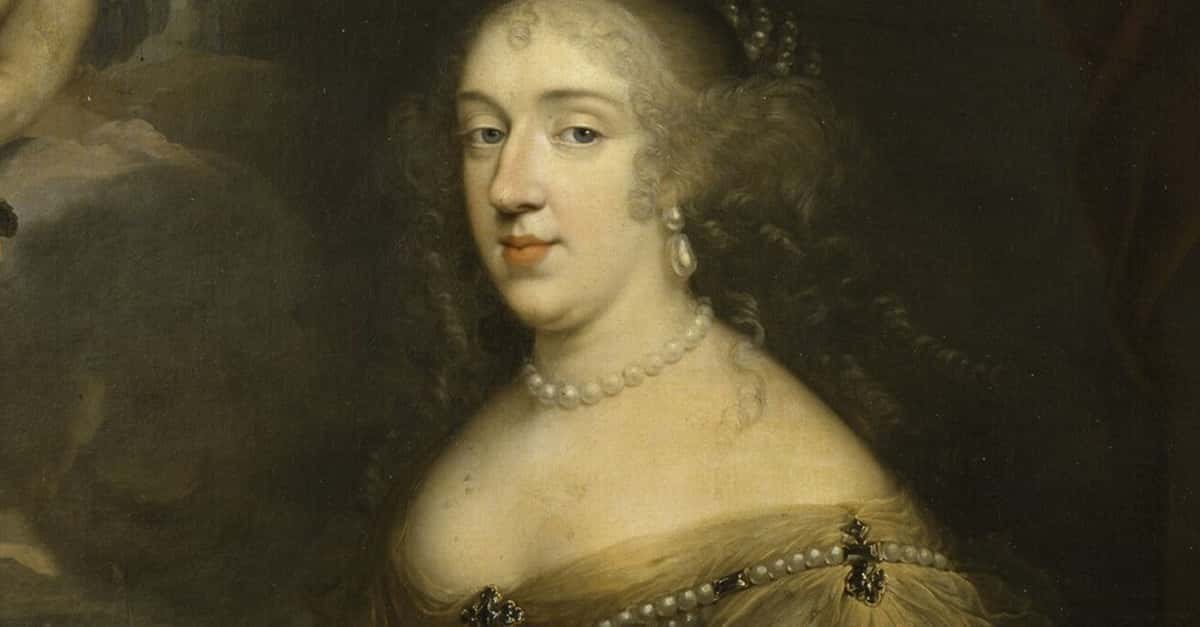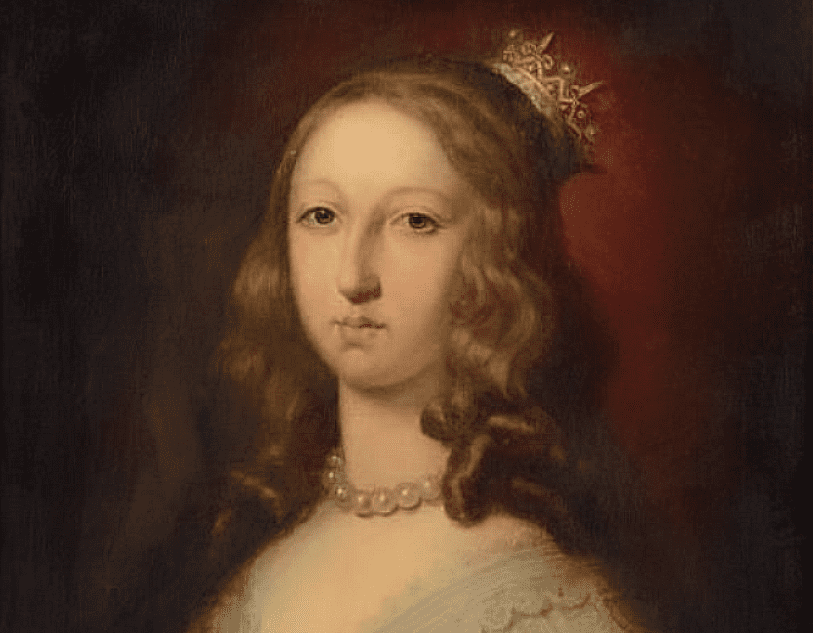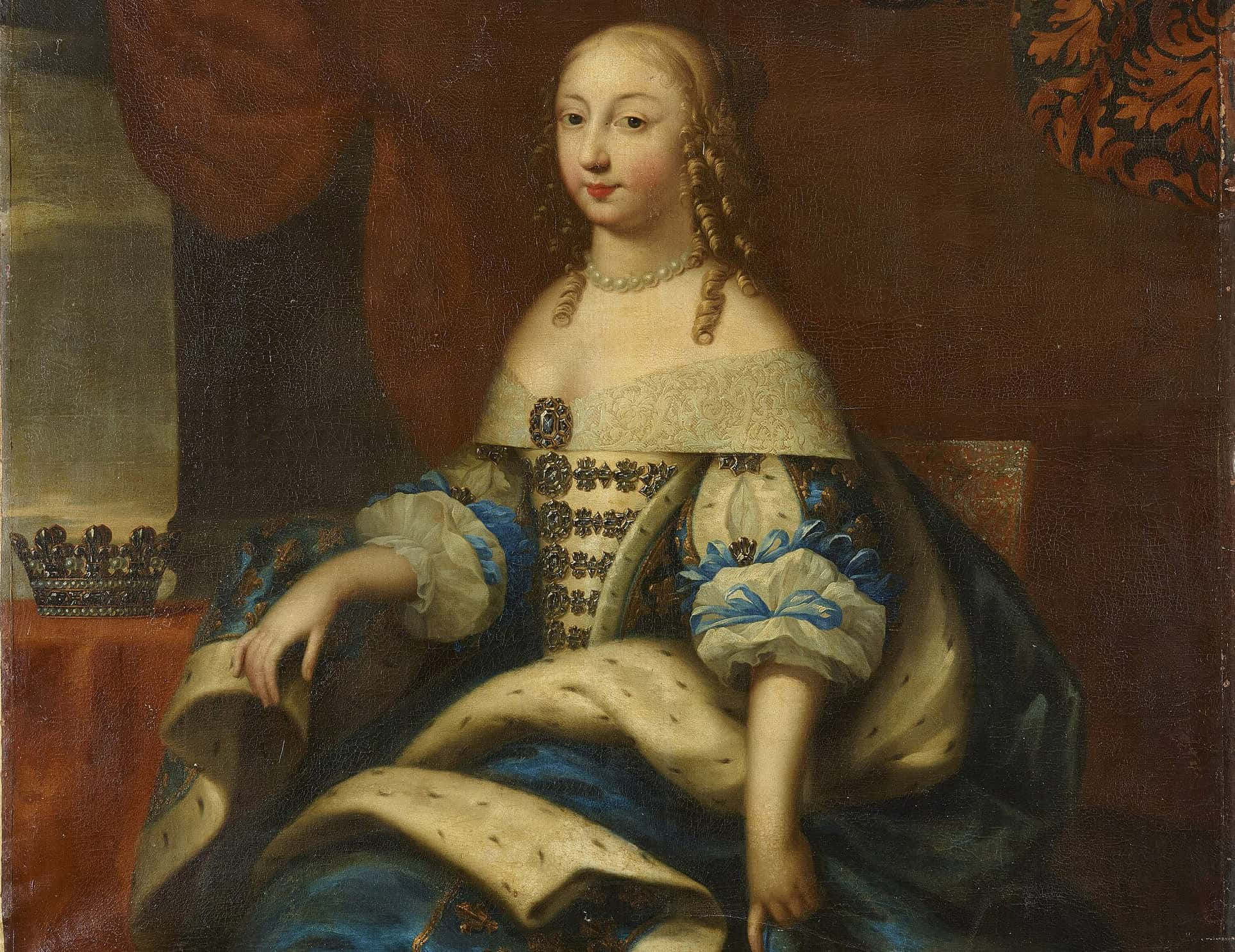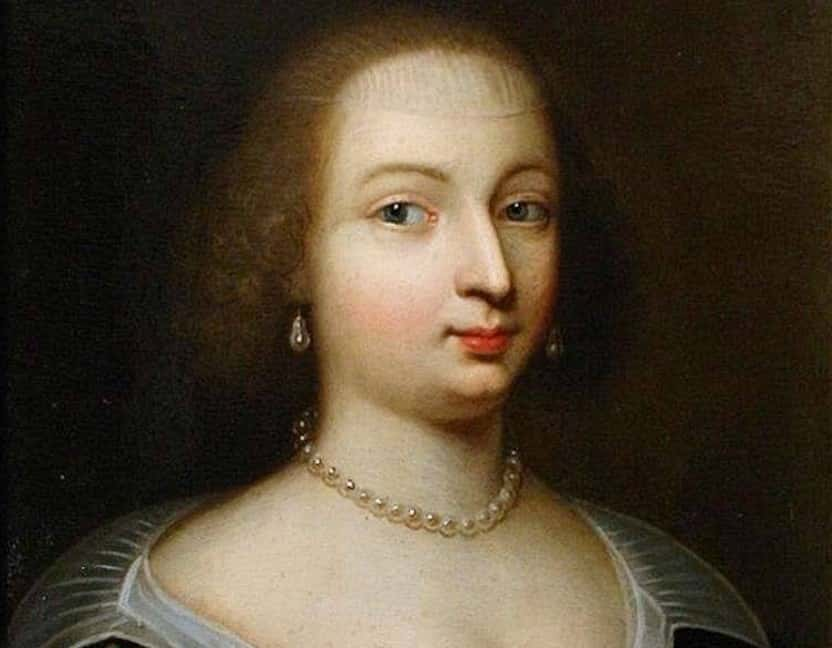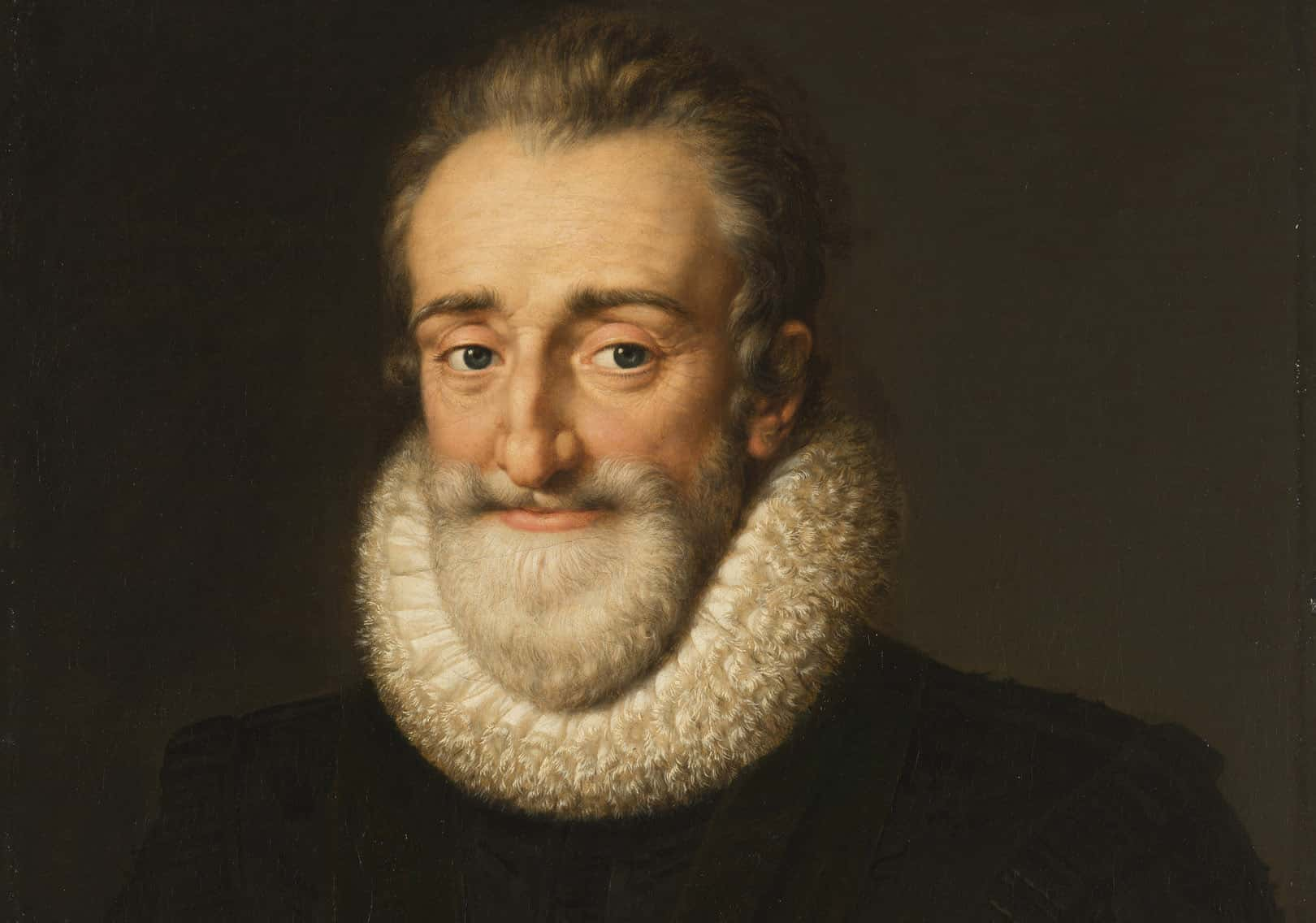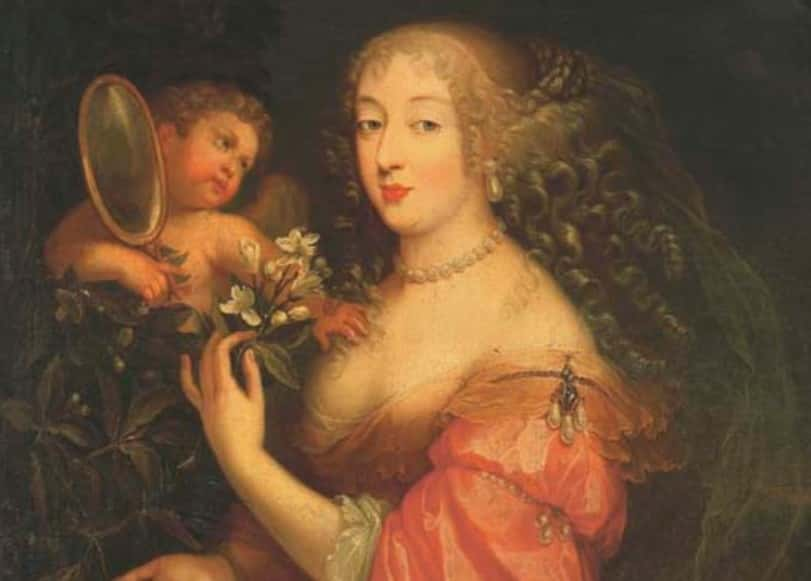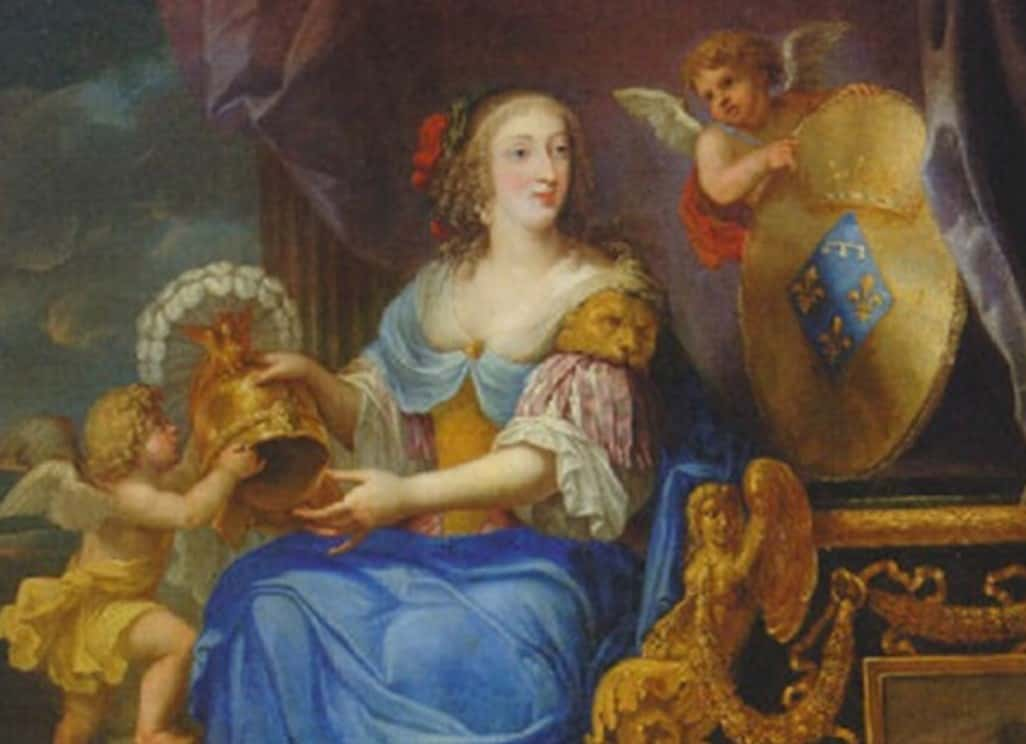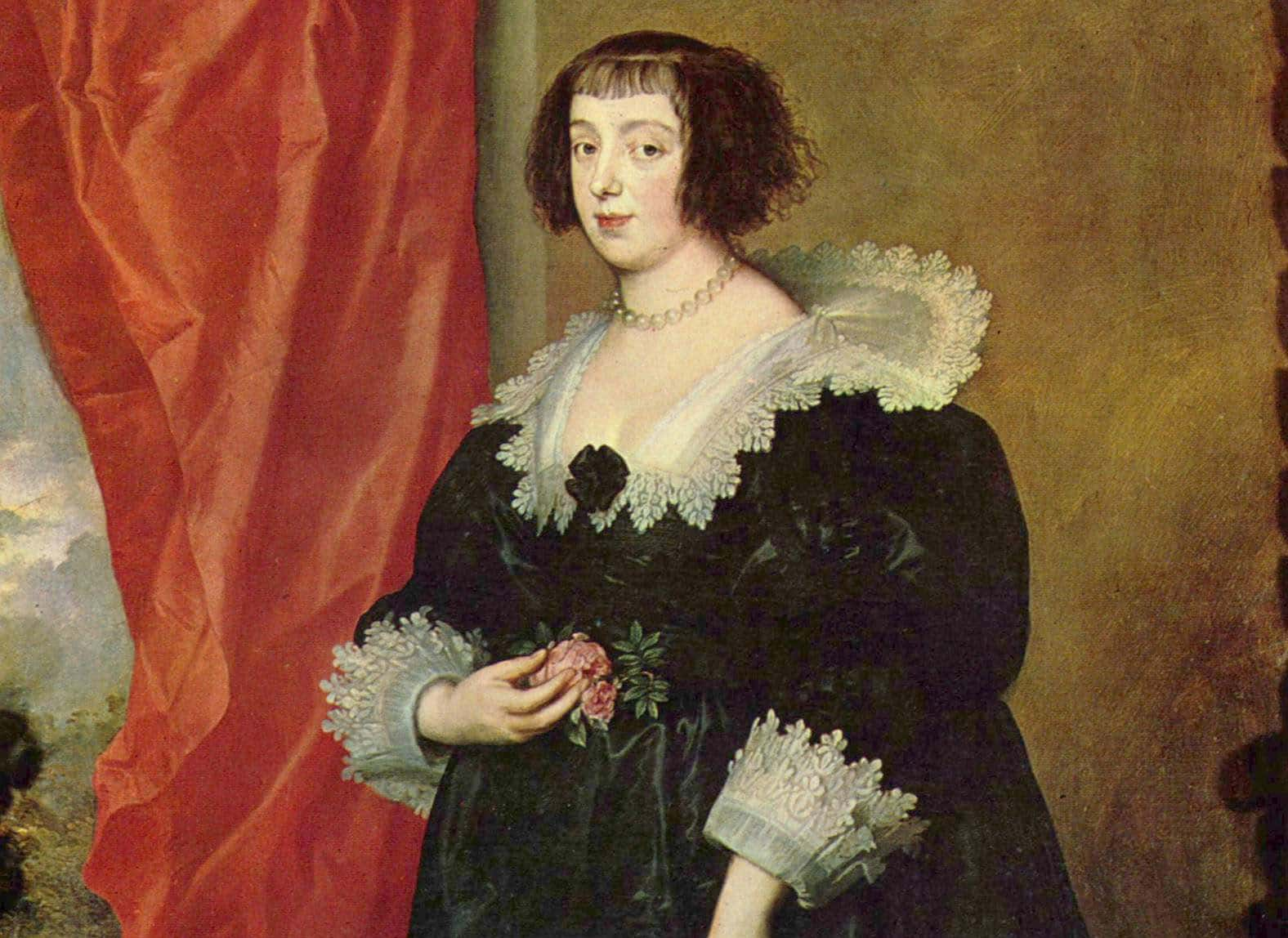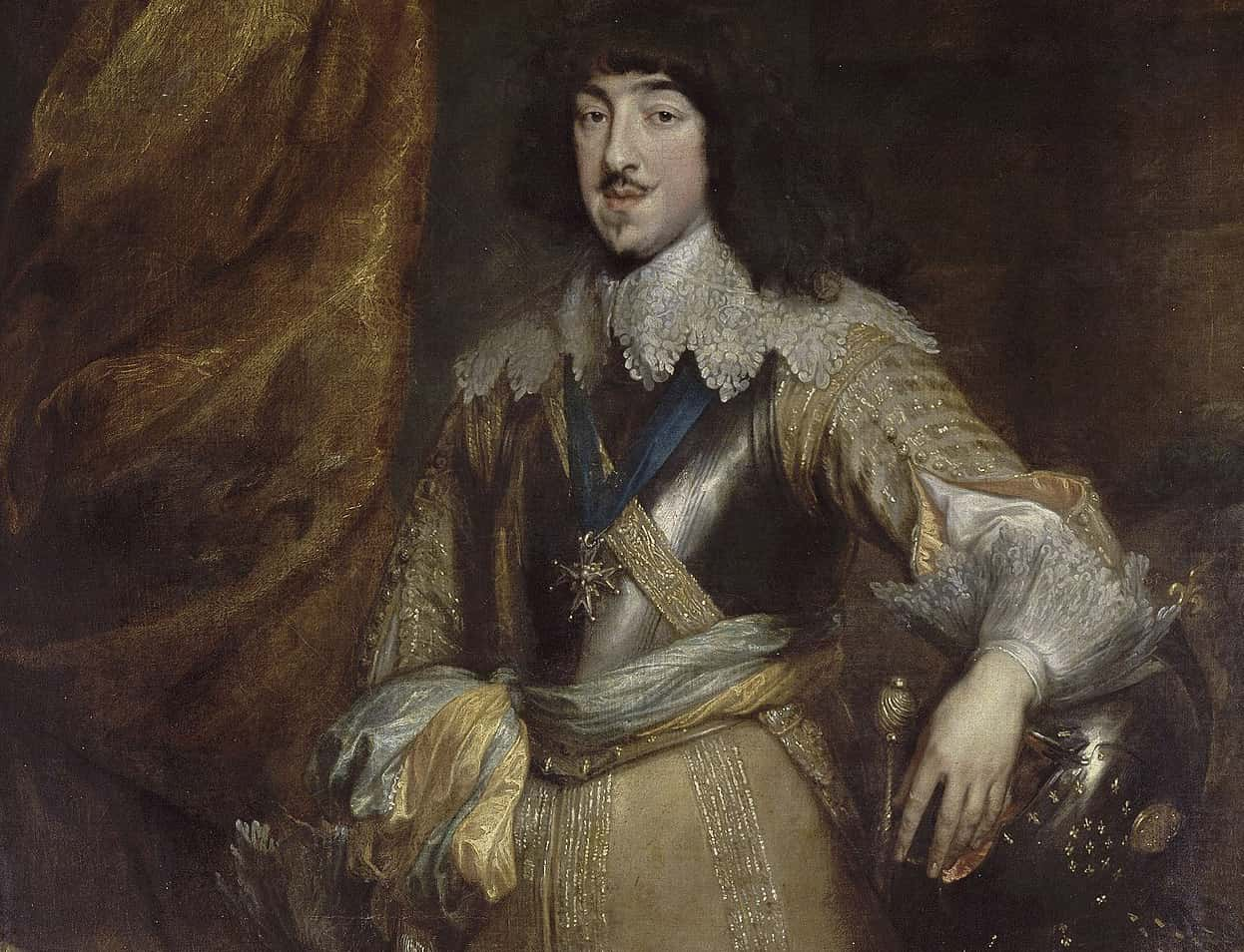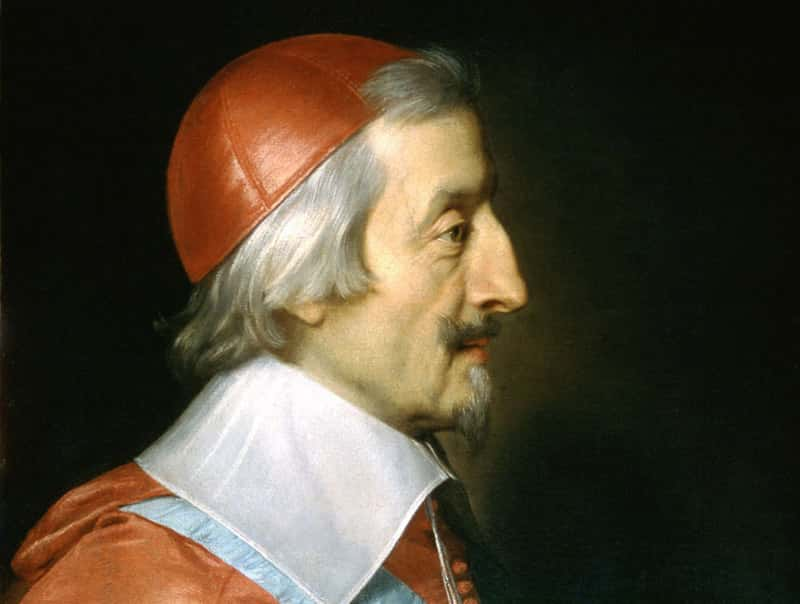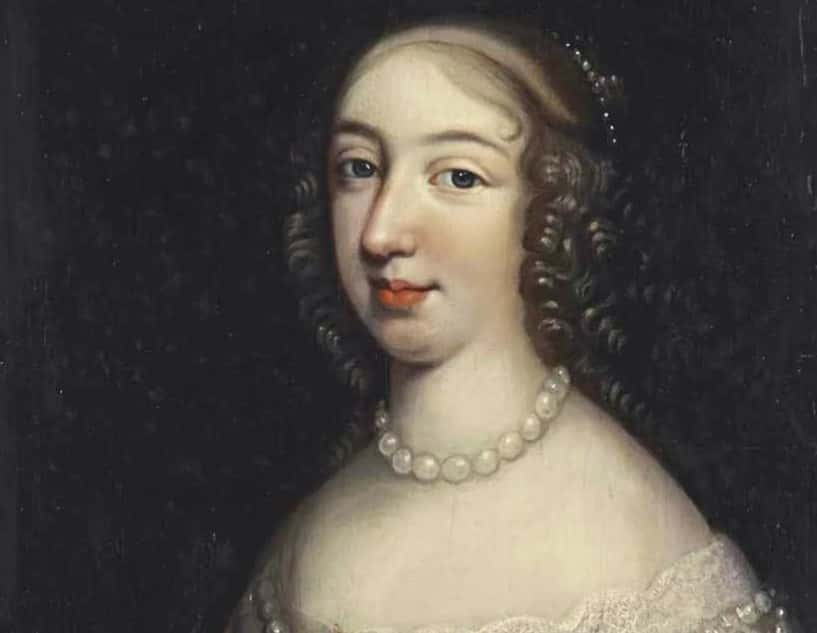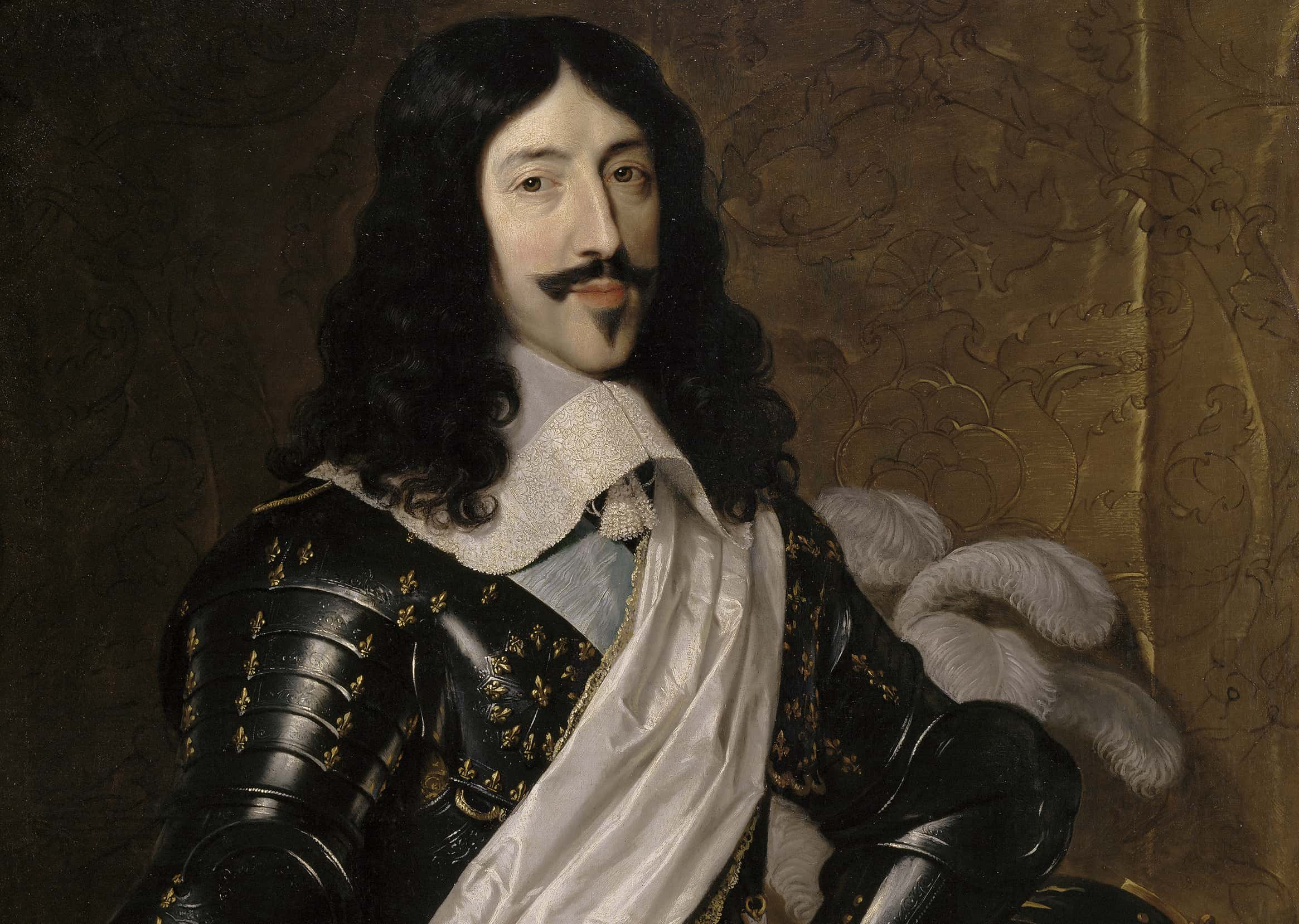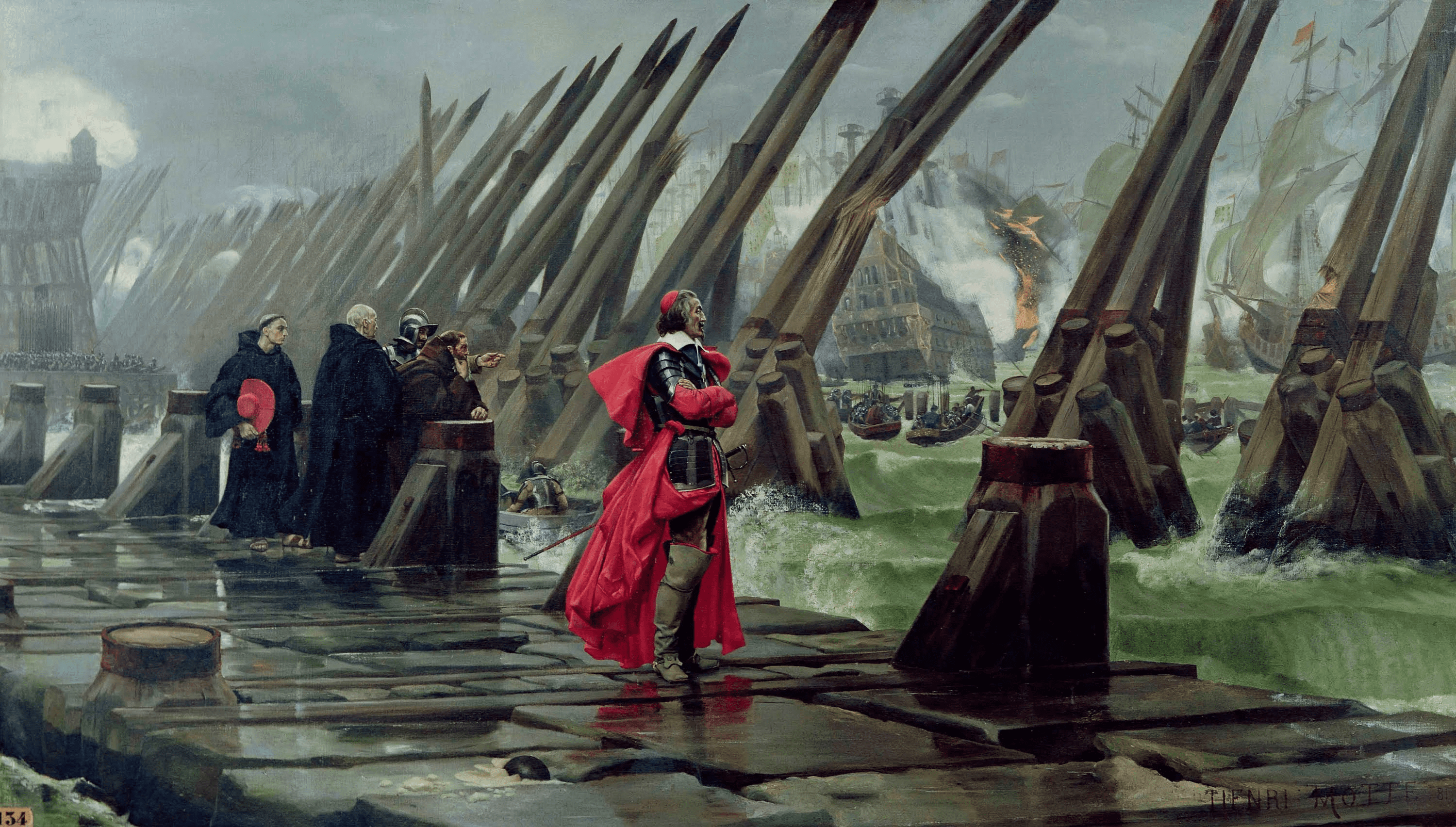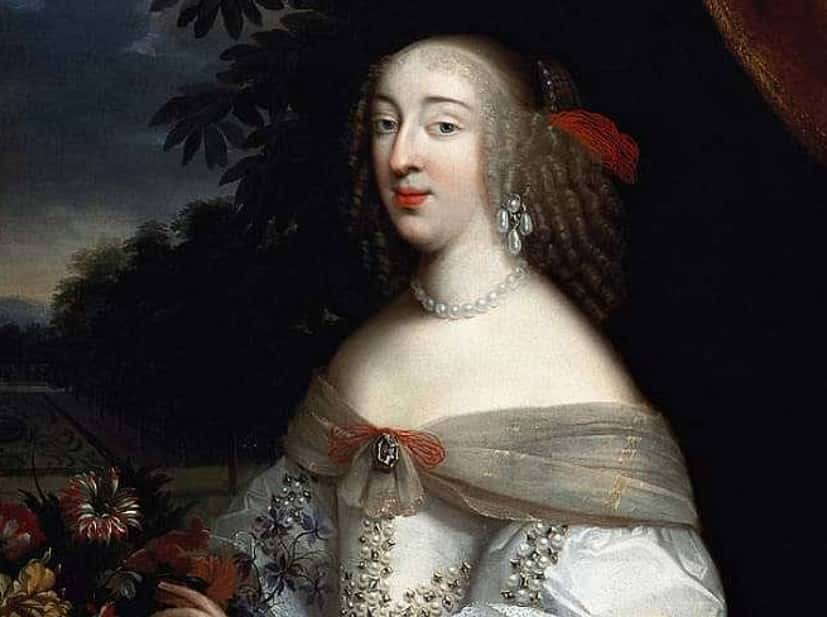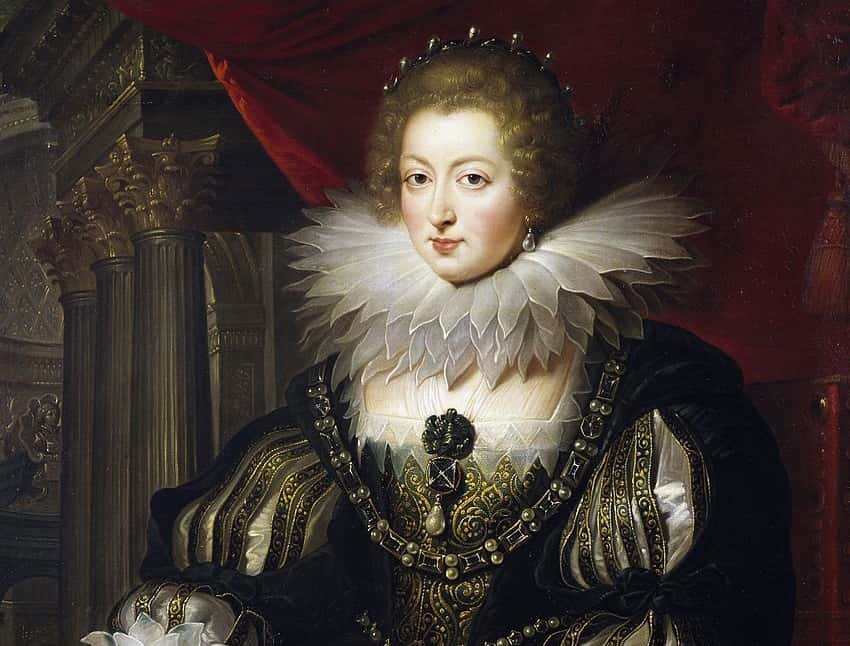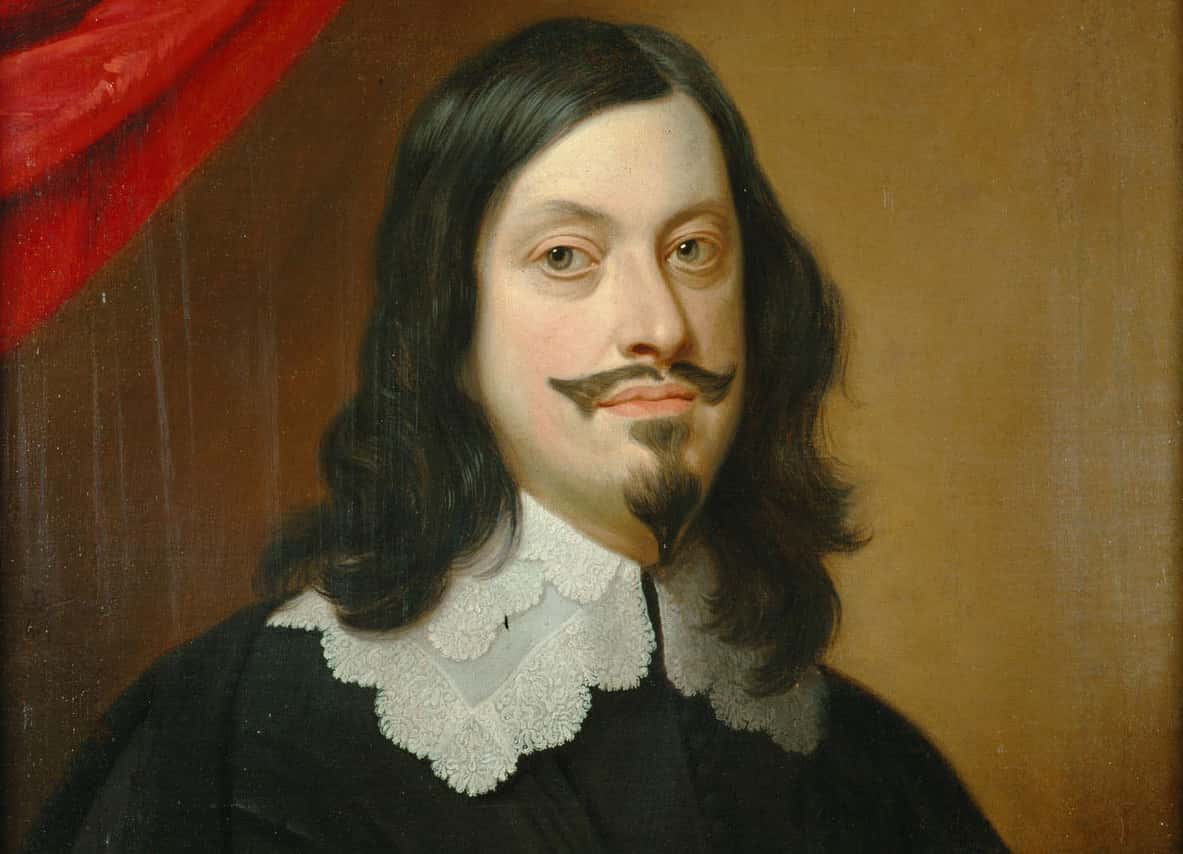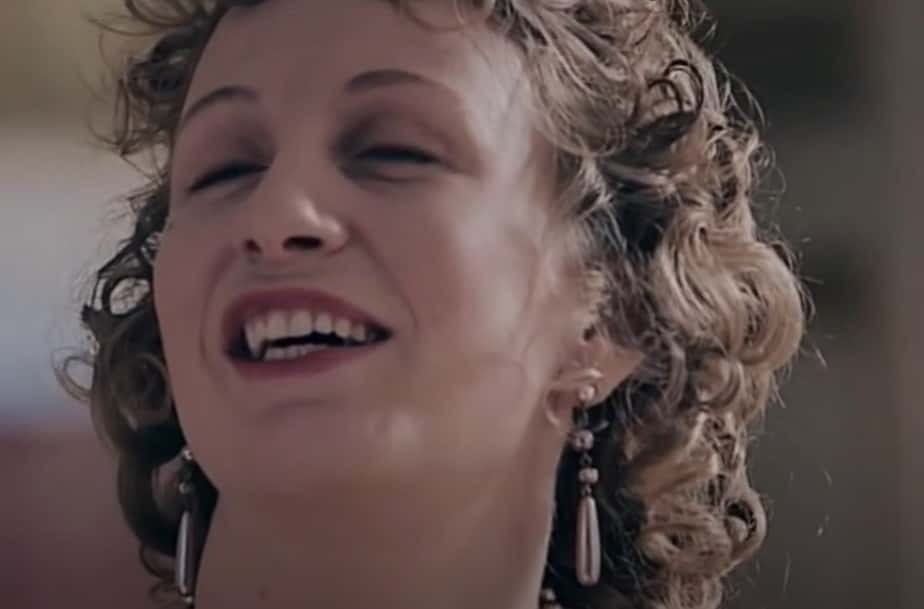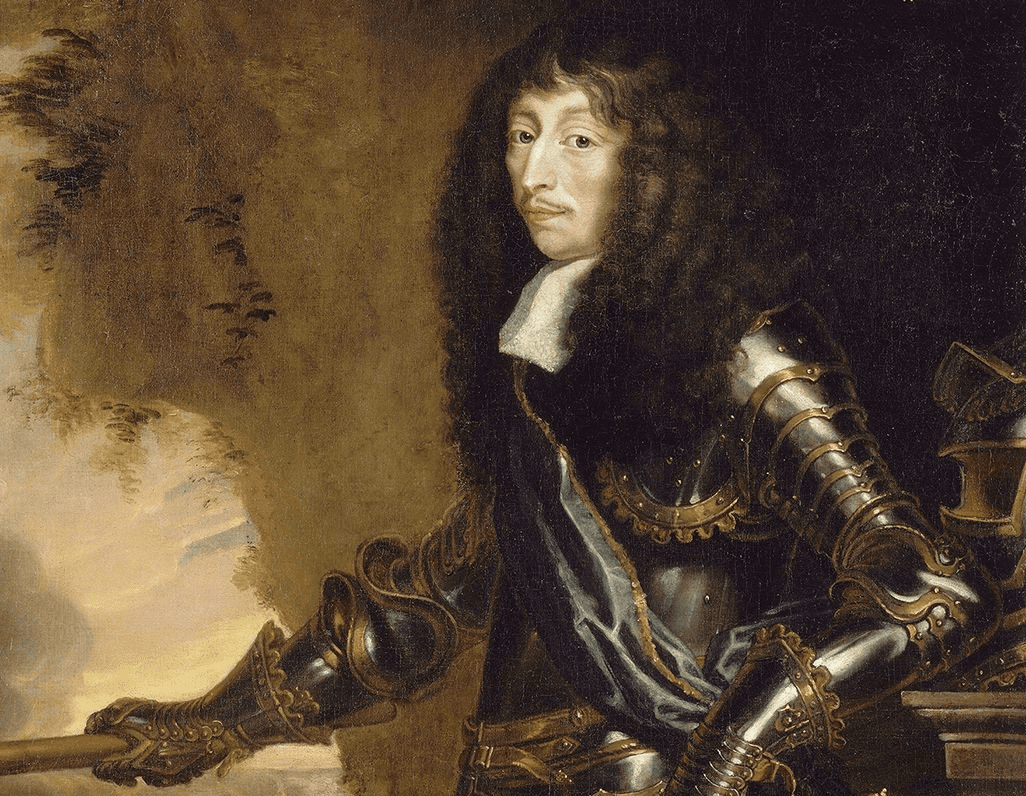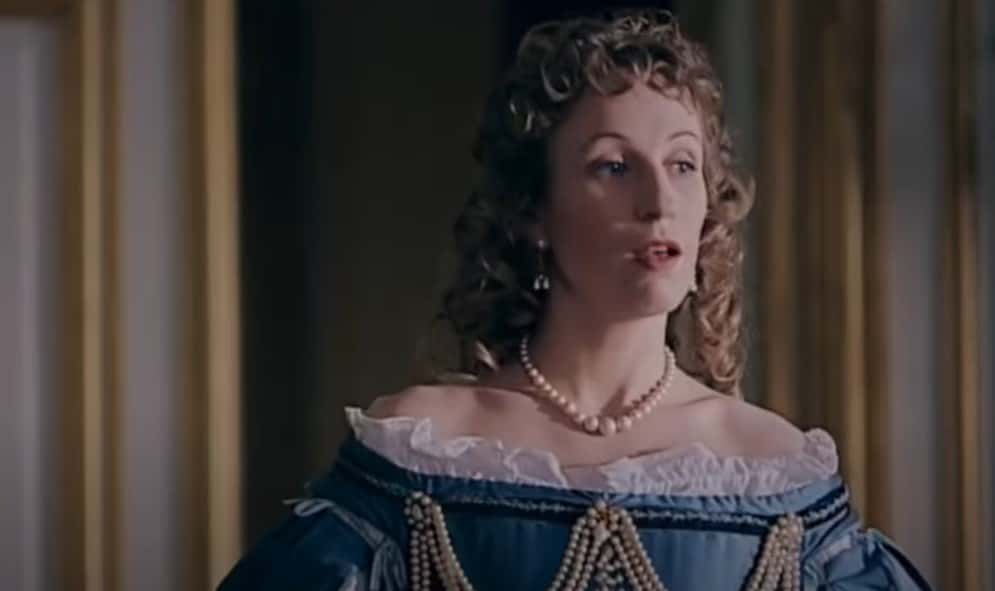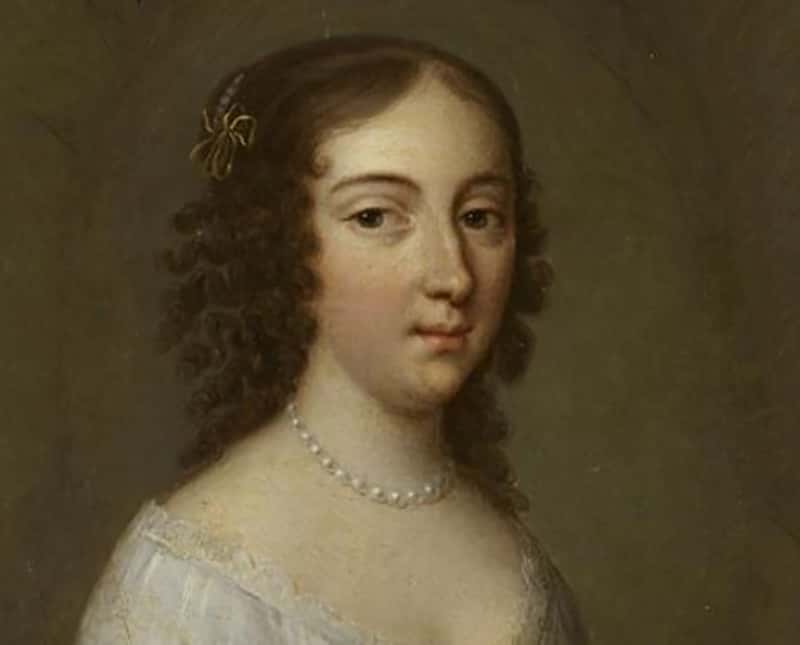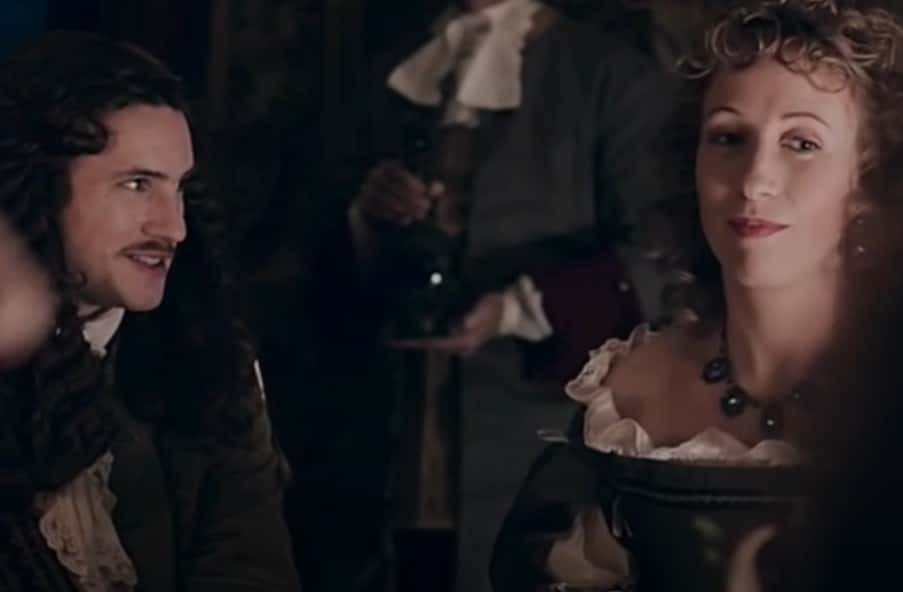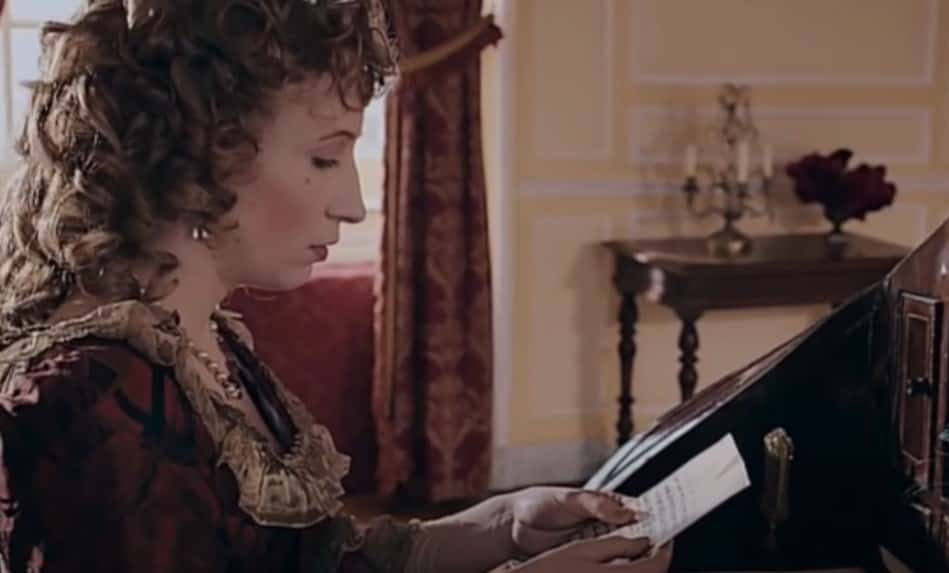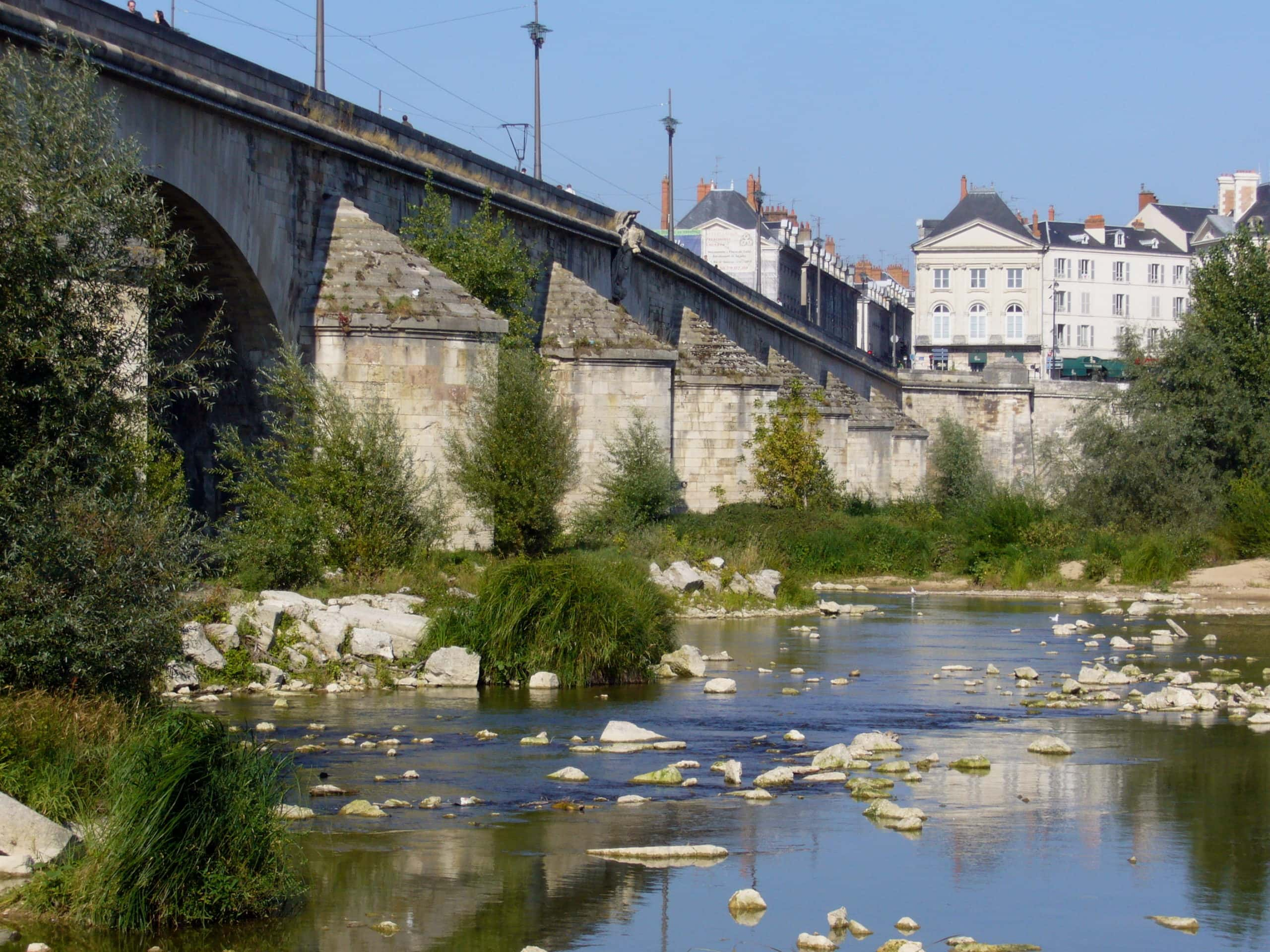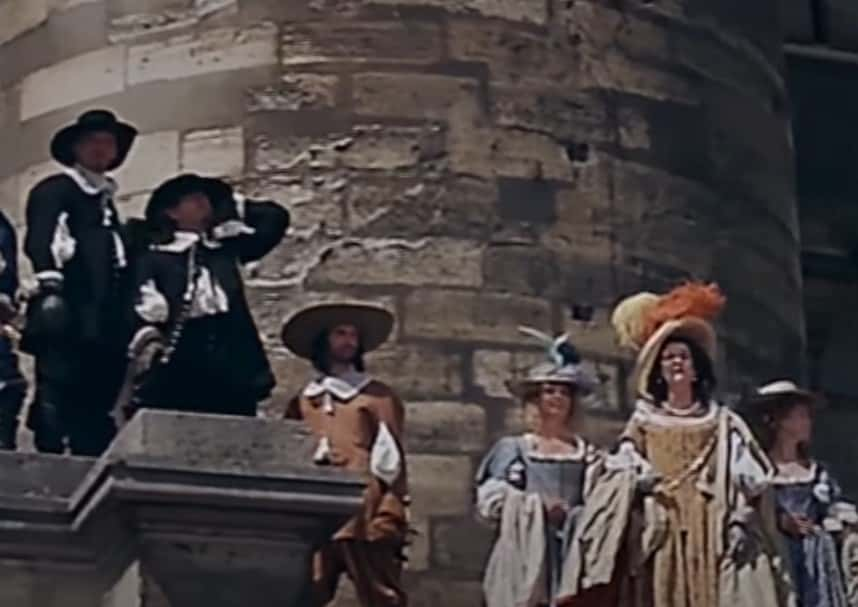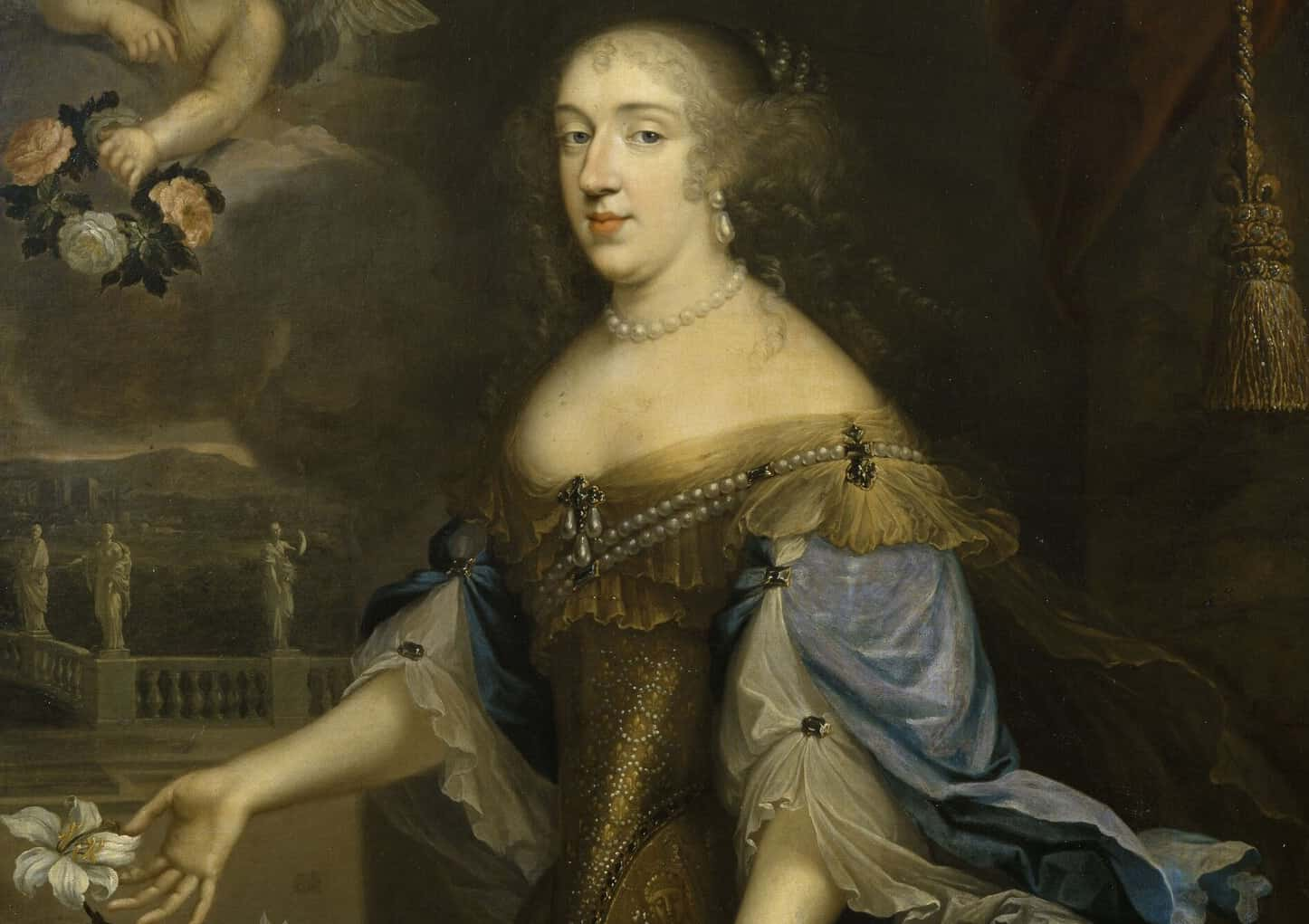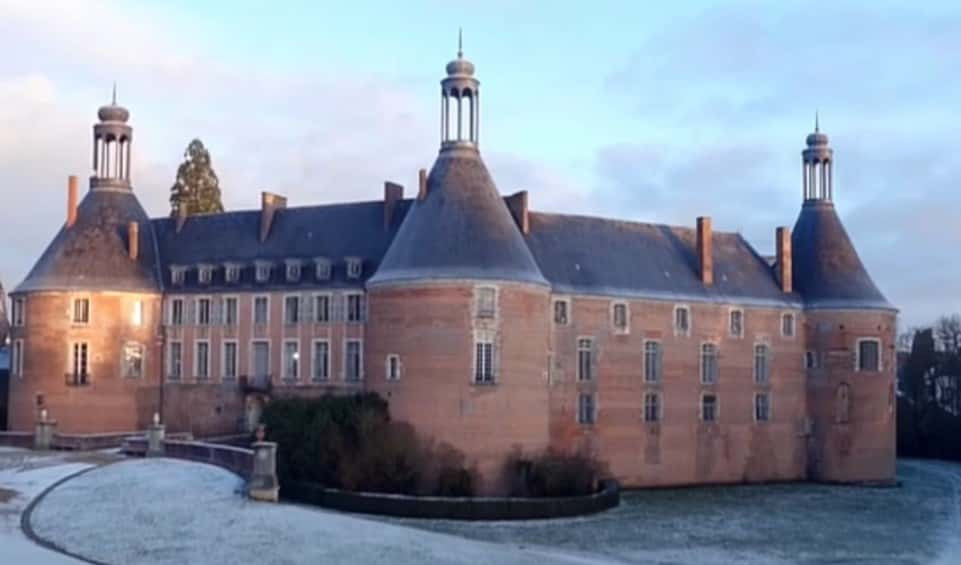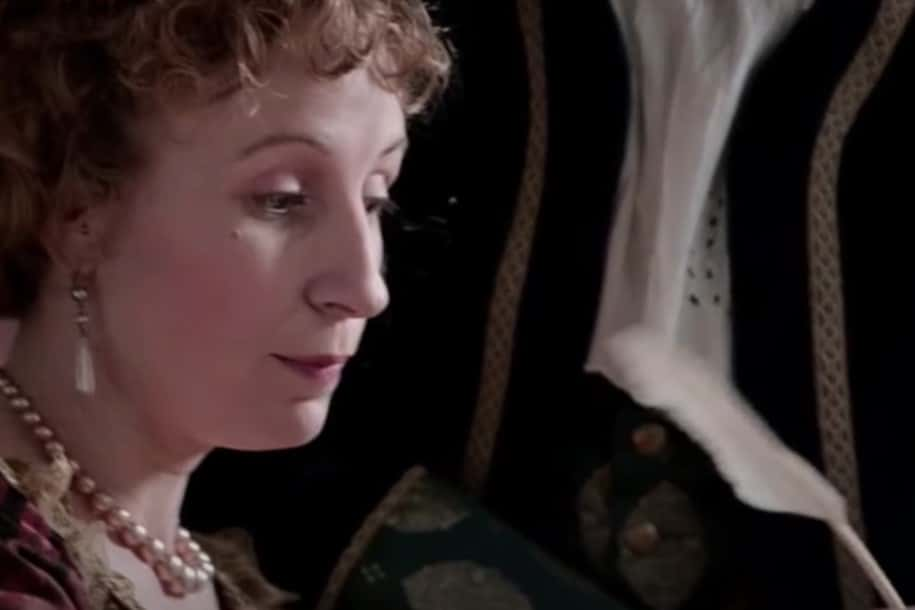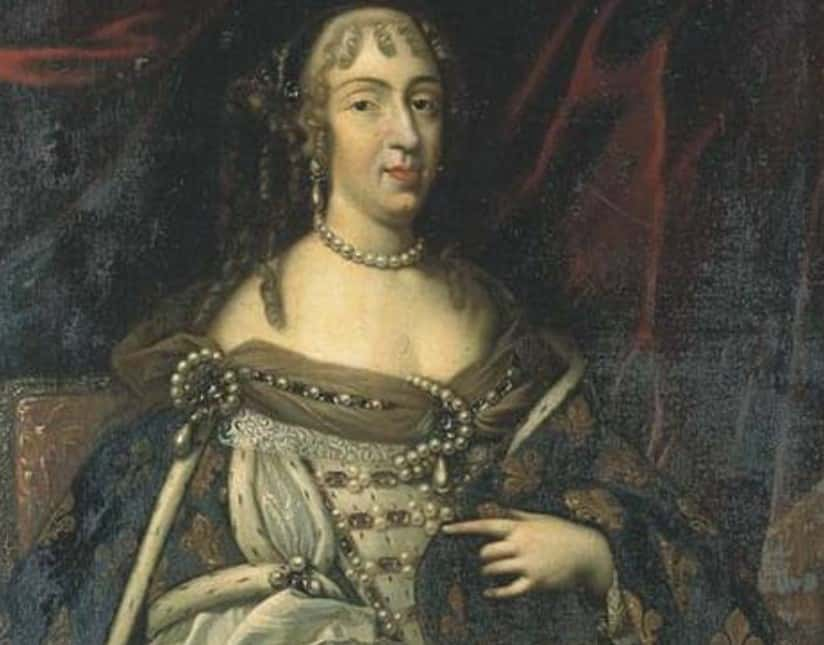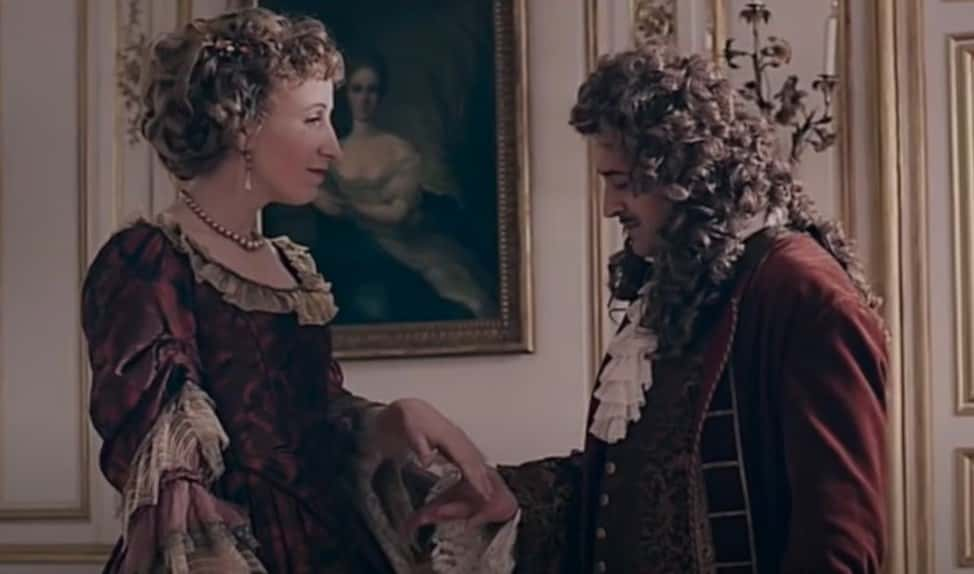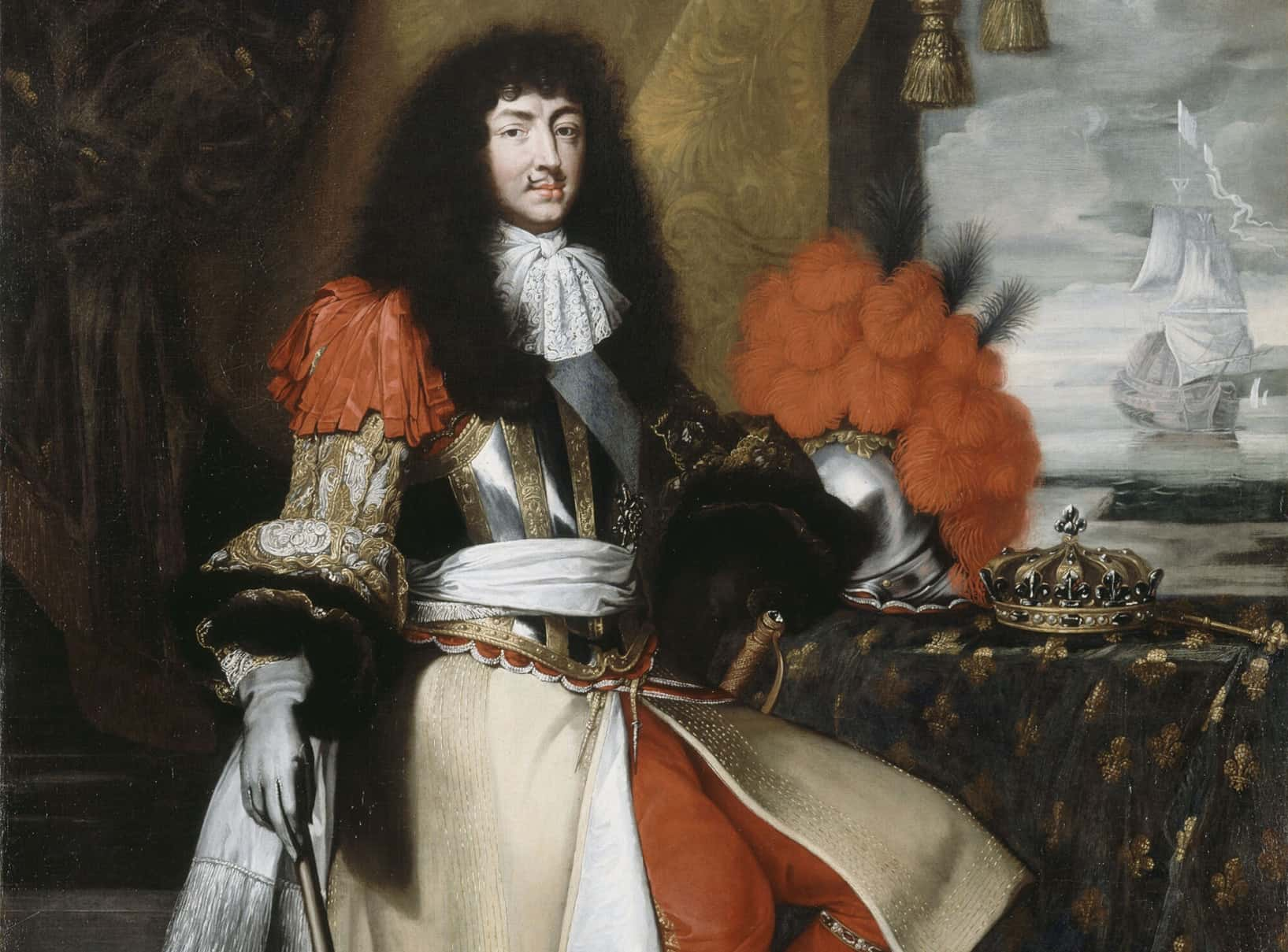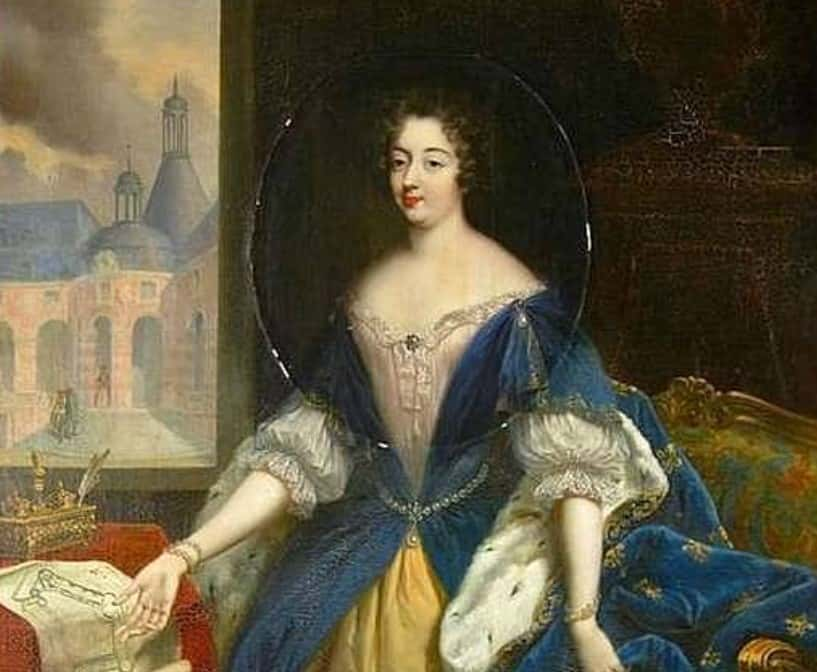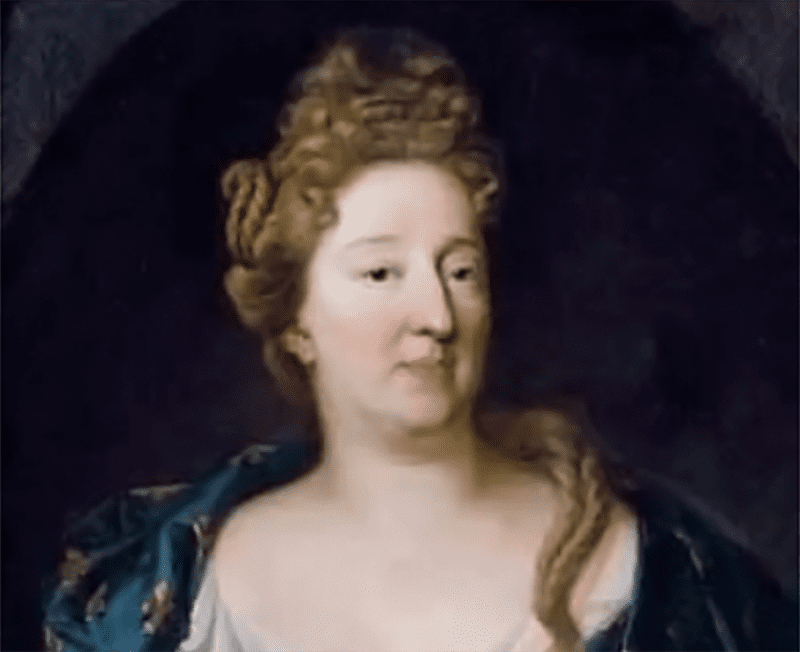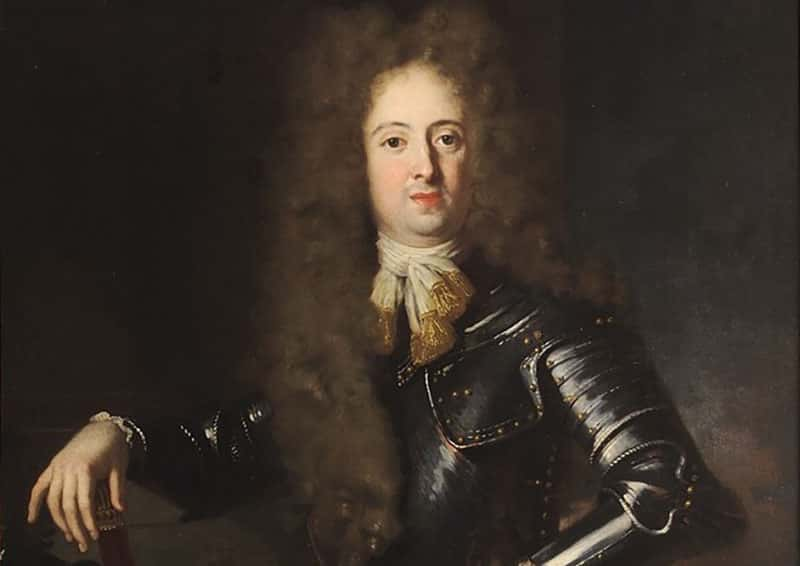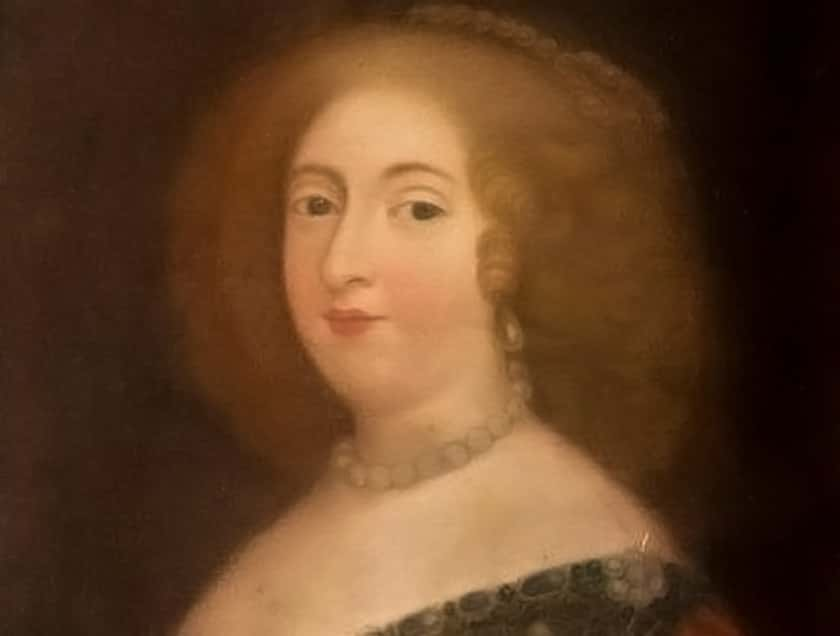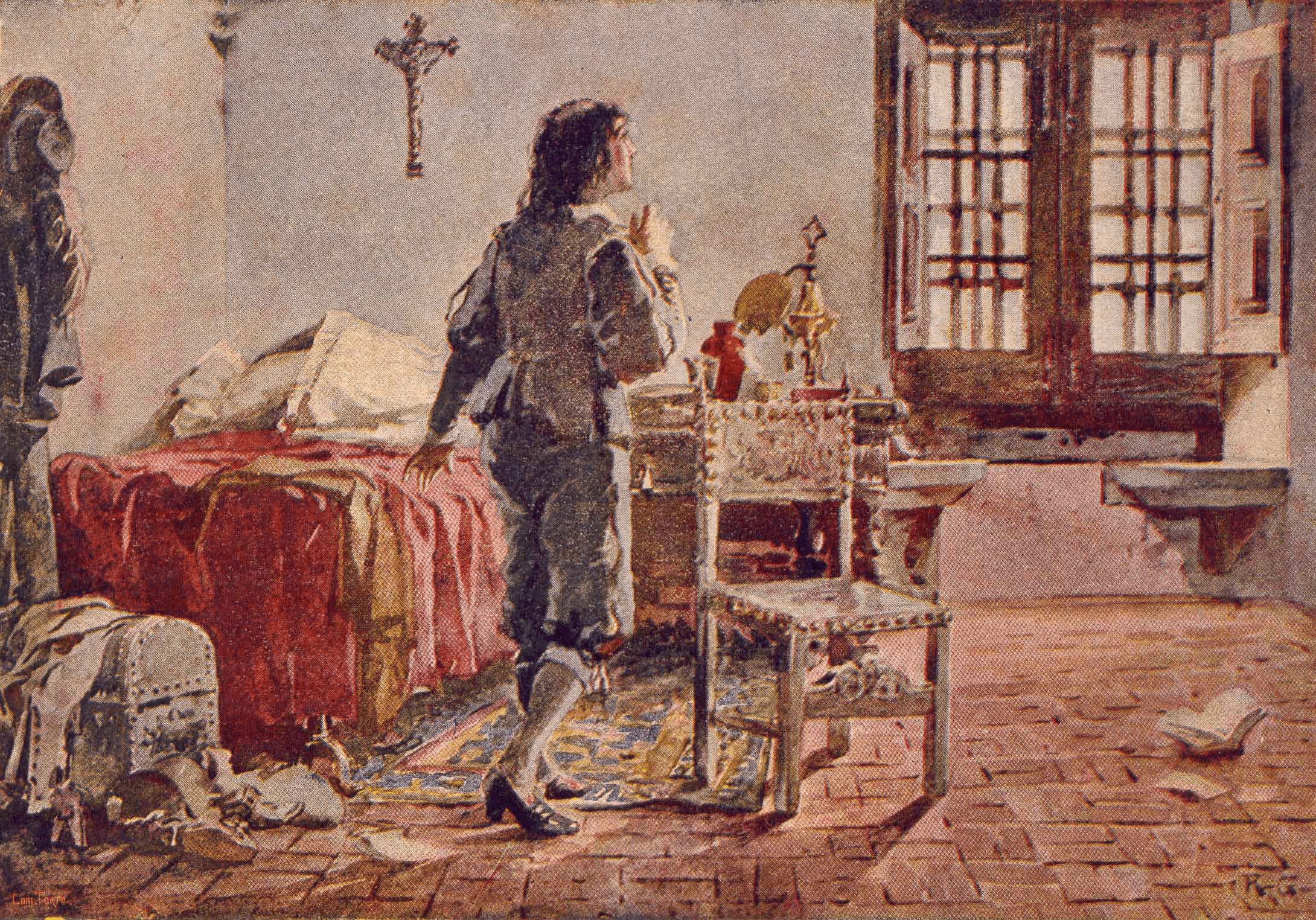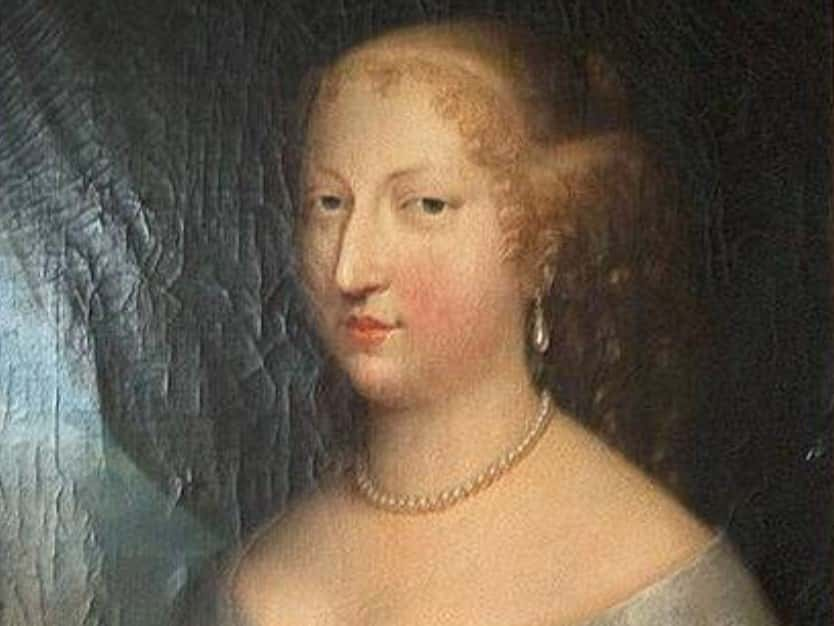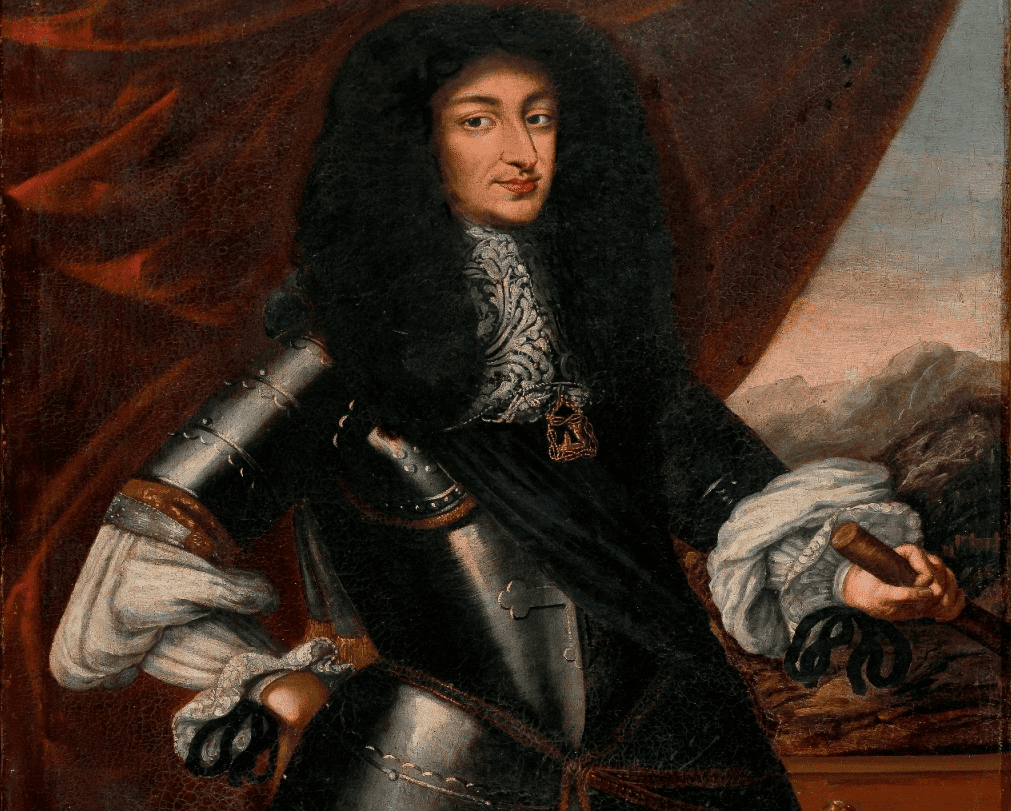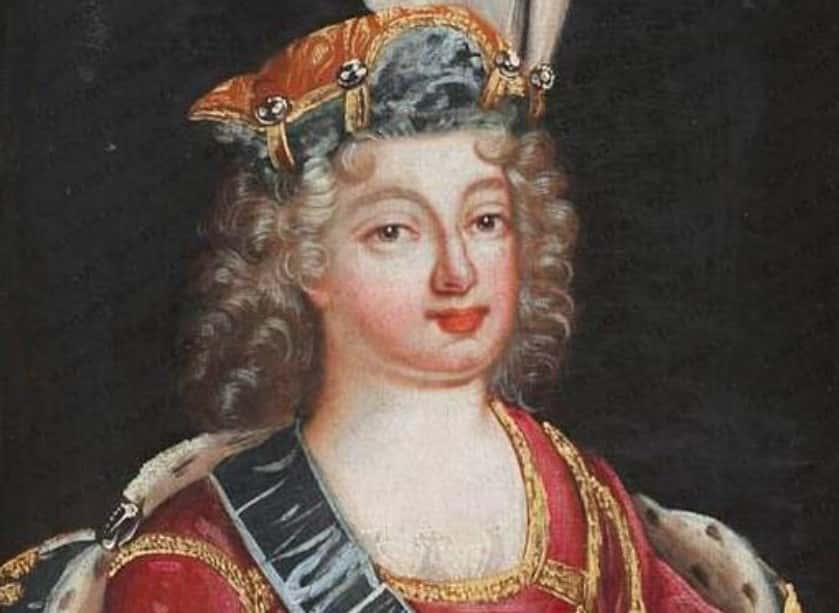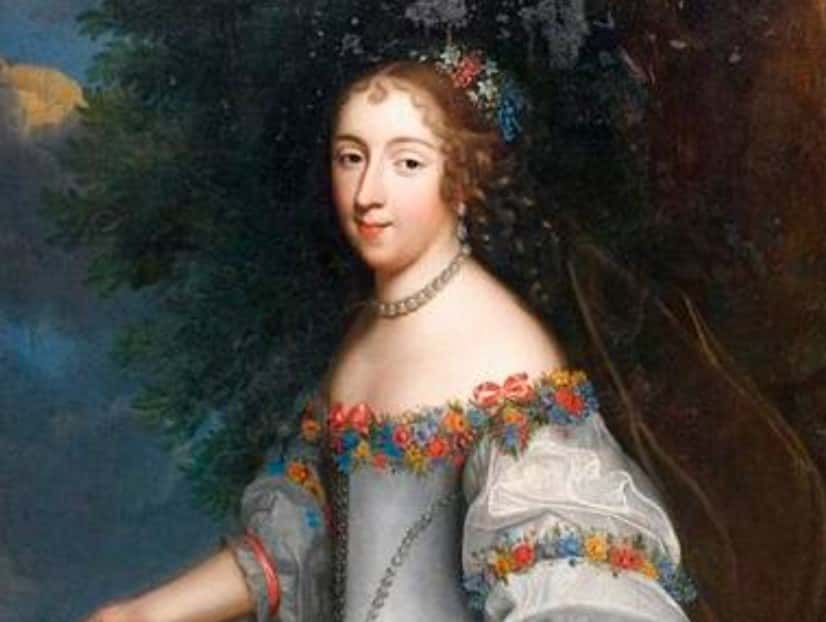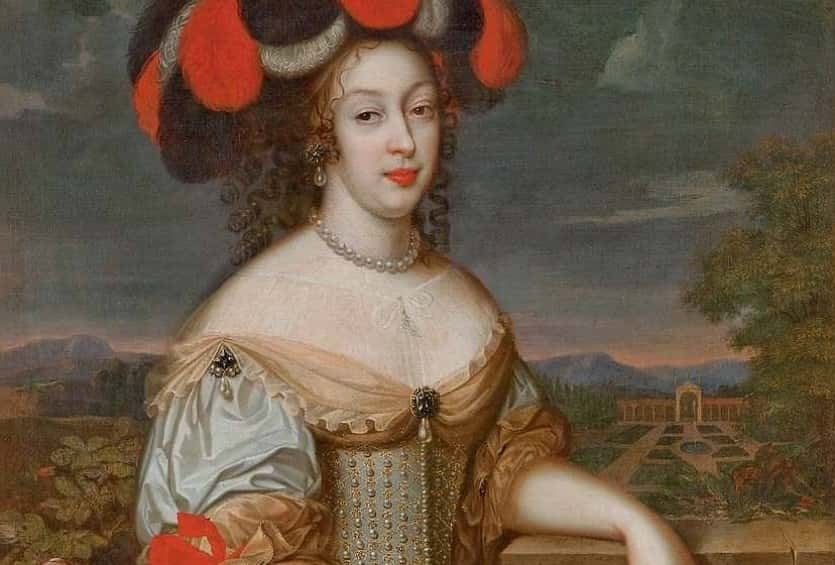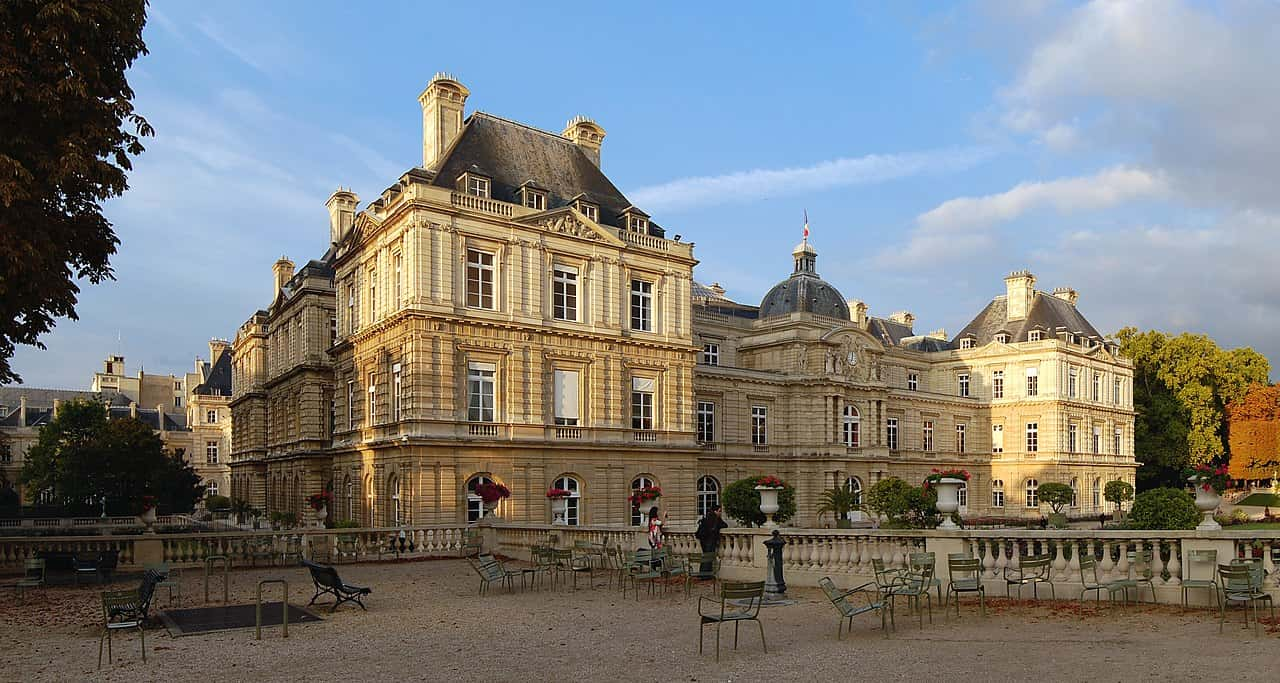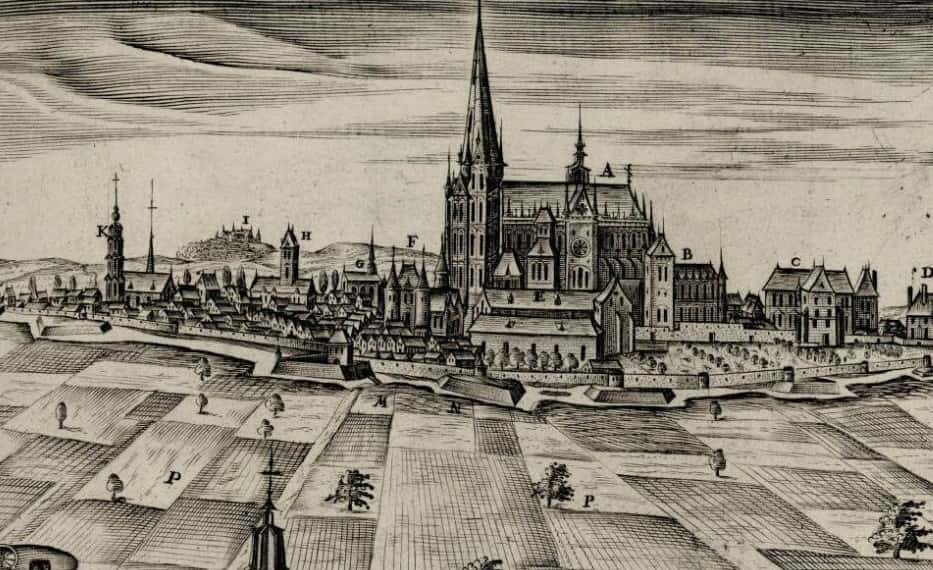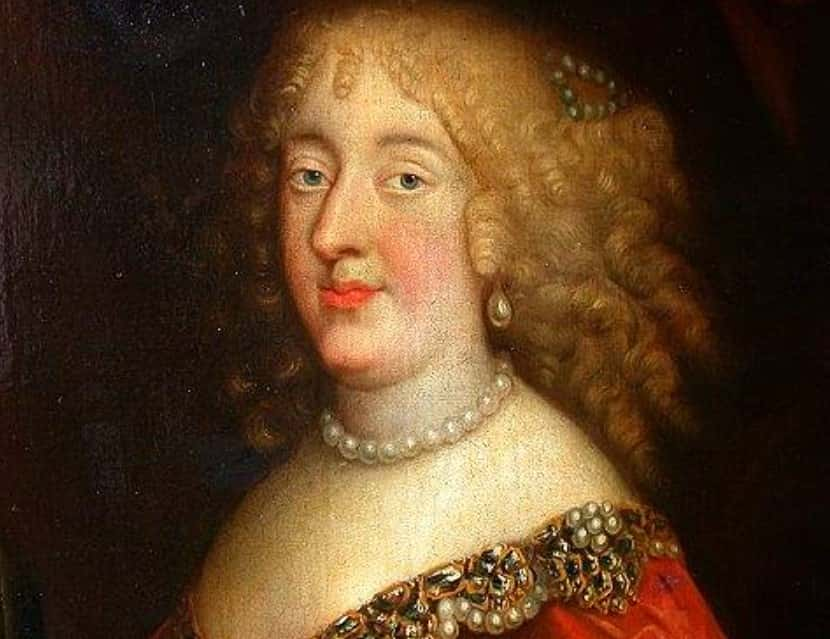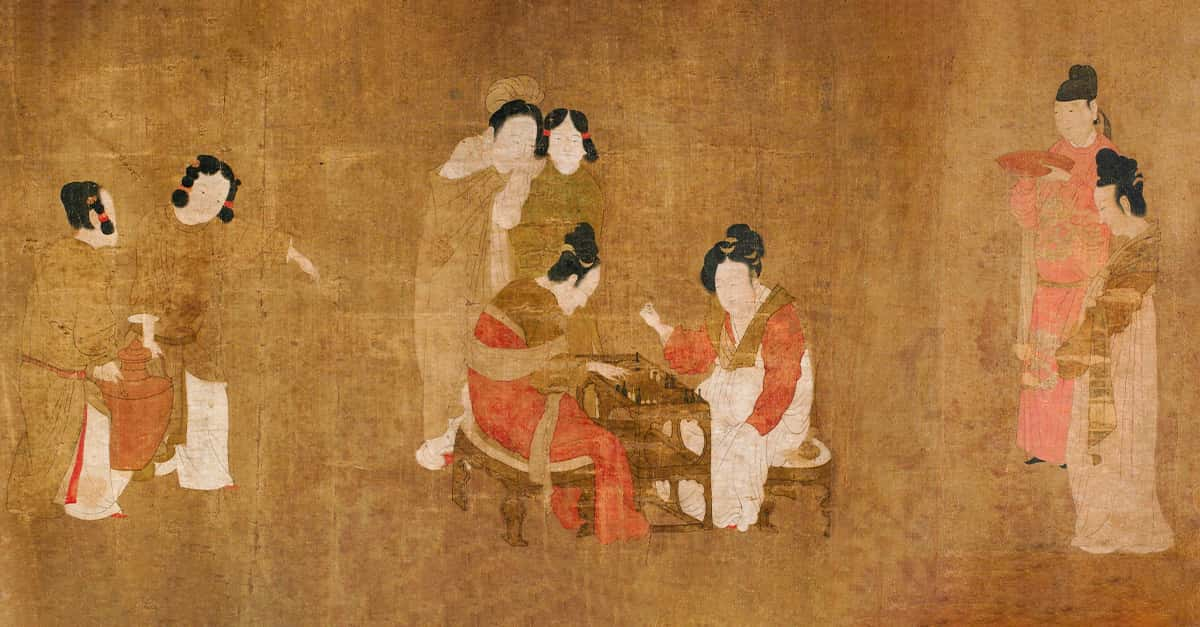A huge inheritance, fashionable BFFs, a proposal from a gay guy, and even a boyfriend in prison. This may sound like the life of a Kardashian, but this is 17th-century France we're talking about. Anne Marie Louise d’Orleans had it all—well, at least in the bank she did. All the girl wanted was to find a guy she could hang on to, but at the end of her days—single and alone—she said she’d only had three happy days in her life. Let’s scour these facts and see if we can find a few more days of happiness for poor Anne Marie d’Orleans.
1. She Had A Very Royal Birth
Before the Louvre was Paris’ foremost art museum, it was a palace and, on May 29, 1627, it was also the rather charmed birthplace of Anne Marie Louise d’Orleans, Duchess of Montpensier. Anne Marie’s father was Gaston, the Duke of Orleans, and quite a big deal. Everyone had to call him Monsieur as he was the oldest brother of King Louis XIII—at least the oldest surviving one.
As it turned out, however, Anne Marie’s mother was even a bigger deal than her father.
2. She Was Set To Strike It Rich
Anne Marie’s mother was important because she was the end of the line. After her, there would be no more Montpensiers at the House of Bourbon. What this meant for Anne Marie was that she was completely set up: She’d inherit untold fortunes, including five entire duchies. Wow! So, when her mother was someday resting in peace, Anne Marie would be resting in absolute luxury.
But there was plenty of time for that to happen, wasn’t there?
3. It Happened To Soon
On June 4, 1627, something dreadful happened. Just five days after Anne Marie’s birth, her mother took ill. Mom was just 21 at the time, but in these days problems around birthing were common—and often didn’t turn out well. By the end of that day, Anne Marie’s mother was no more. Anne Marie was just five days old and she'd already lost her mother.
Of course, it wasn't all bad: This also made her one of the richest five-day-old babies the world has ever seen.
4. She Had A Few Titles
At just five days old, Anne Marie was now the Duchess of Montpensier. Since she was the granddaughter of Henry IV—the King of France—everyone had to call her Mademoiselle. I can just imagine the poor nannies: “Does Mademoiselle want her diaper changed?” If that wasn’t formal enough, Anne Marie had another title: the Granddaughter of France. She had impossible shoes to fill, and such tiny feet to do it.
That’s why they called in the best nanny in all the land.
5. She Was Haughty
French authorities hired a full-time governess for our little duchess, but she was a controversial choice: Madame de Saint Georges had just returned from England, where she’d gotten into a heap of trouble for being a meddler. This snobbish nanny helped teach Anne Marie just how important she was—and Anne Marie learned quickly. When she was just a toddler, she told someone that her grandmother simply could not possibly be her grandmother. Why? Because her real grandmother must have been a queen.
That’s a pretty haughty statement for a toddler. Imagine how bad she'd get when she was a teenager...
6. There Was A Scandal
Even though she was growing into quite the holy terror, Anne Marie was devoted to one person: her father. They didn’t live together, but Anne Marie visited him often. One thing her father Gaston didn’t let his daughter know was that he was looking for a new wife. When he found someone he wanted to marry, there was a scandal in the making.
7. He Got Sent Away
Anne Marie’s father was not exactly on good terms with the royal court, and so when he applied to marry Marguerite of Lorraine, Louis XIII and the infamous Cardinal Richelieu refused to let him. Gaston married his love anyway, only in secret. When the King and the Cardinal found out they did two rather harsh things: First, they annulled his marriage, then they sent the lovebirds into exile.
Anne Marie had already lost her mother—now her father was gone too.
8. She Missed Him
While her father was in exile, Anne Marie didn’t see him at all. Not for two full years. The poor girl was so devastated that when she did finally see him again, at the age of seven, she ran at him and threw her little body into his. Later she somehow found out that it was Cardinal Richelieu who had exiled her father, and so she devised a special punishment for him.
9. She Punished Him
Once Anne Marie had decided that Cardinal Richelieu was public enemy number one, she thought up a way to pay him back. Whenever she saw the Cardinal, she would break out in song. It wasn’t that she had a bad voice, but it was the songs she chose. She sang the kinds of bawdy songs usually reserved for peasants on the street. It was that, or songs that explicitly made fun of the Cardinal. Not bad for a seven-year-old.

History's most fascinating stories and darkest secrets, delivered to your inbox daily.
10. She Was Kind Of Creepy
In 1638, Anne Marie’s uncle Louis XIII had a son. Since Louis XIII was then the King of France, it was a sure thing that this baby would be next in line. Eleven-year-old Anne Marie took one look at the baby who would be King and made a shocking announcement: She said she would marry him. Louis XIII thought it was hilarious and laughed even harder when Anne Marie called the baby “her little husband.”
Does anyone else feel that an 11 year-old-girl saying she wanted to marry a baby is creepy? Well, Cardinal Richelieu did, but he also had another reason for not liking it...
11. She Got Scolded
Richelieu had a serious grudge against Anne Marie’s father Gaston. He believed Gaston was not loyal enough to the King, and he would not accept the man's daughter anywhere near the throne. Though the King laughed, Richelieu gave Anne Marie a serious chastising for even imagining marrying the young prince. As it turned out, Anne Marie didn’t seem to be very afraid of Richelieu—or any other adult for that matter.
This little duchess was growing into a little devil.
12. She Rebelled
All this time, Anne Marie had the same governess: Madame de Saint Georges. Well, in 1643, when Anne Marie was 16 years old, Madame passed. After 16 years together, they’d grown quite fond of each other, and it was clear that Madame's replacement was going to have her work cut out for her. Anne Marie’s first act of rebellion was to lock her new governess in her room—and then lock the governess’ grandson in another room.
The girl was out of control, which could only mean one thing: She was ready for marriage.
13. He Was Twice Her Age
In 1643, Anne Marie’s uncle—King Louis XIII—croaked. It was now Anne Marie’s “little husband’s” turn to be King. He was just six years old at this time, and I’m sure Anne Marie was a little embarrassed at suggesting she marry him. Anne Marie was now 19 years old and the court expected her to find a suitable husband. Fortunately, there was one guy who Anne Marie seemed keen to marry: Holy Roman Emperor Ferdinand III.
It was an odd match for a young woman. Ferdinand was newly widowed and twice Anne Marie’s age. But love is blind and all that...
14. She Wanted A Husband
For some reason, Anne Marie desperately wanted to marry the much older Ferdinand. She took her request straight to her aunt, Queen Anne, who had stepped in as monarch until her son was old enough to reign. Queen Anne saw what most people saw—that Ferdinand wasn’t a great match for Anne Marie. When Anne Marie got a big fat “no,” her response was to throw a question back at Queen Anne: “So, who do you want me to marry?”
The child king was too young, so Queen Anne proposed her own brother. This made no sense at all.
15. She Refused
Queen Anne had said no to Anne Marie marrying Ferdinand, who was 19 years older than Anne Marie. In response, Queen Anne offered up her brother: A man also named Ferdinand who was a mere 18 years older than Anne Marie. Ummm…okay. Of course, Anne Marie said no to Ferdinand #2 just to spite the Queen. But she was playing a dangerous game: Her shelf life as a young bride was soon going to expire.
Would the greatest heiress of Europe end up single?
16. He Was A Hero
Anne Marie was about to get a curveball. In 1648, the French Government wanted to raise taxes on judicial officers. Unsurprisingly, said officers weren't happy and fought miserably against the tax hike. Emerging as the hero of the fight against high taxes was Louis de Bourbon, the Prince of Conde. Louis took hold of Paris in order to protest the tax. This protest got the rather strange name: the Fronde Parlementaire.
This sort of political squabble seems of little interest to a spoiled duchess like Anne Marie—but she was interested for one particular reason, and his name was Louis.
17. She Had A Crush
Anne Marie had developed a big crush on the hero of the Fronde: Louis de Bourbon, the Prince of Conde. Louis was certainly an eligible bachelor, except for one thing: He was already married. However, as it turned out, Conde was not so fond of his own wife. Anne Marie thought there may be hope that she could somehow sink her claws into the dashing prince. She needed a strategy—and it had to be devious.
18. She Was Cunning
Instead of making Conde’s wife her arch enemy, Anne Marie did the opposite; she made the woman her bestie. Anne Marie manipulated her way next to Claire Clemence, and the two quickly became fast friends. Anne Marie and Claire were hanging out together in Bordeaux and, with their proximity to the Prince of Conde, got all wrapped up in the Fronde. They even helped to end the siege of Paris in 1650.
While this sounds like a good thing, ending the Fronde Parlementaire made Anne Marie look like she was against the Queen—and that was most definitely not a good thing.
19. She Had A Plan
Whether there was any true friendship between Anne Marie and Conde’s wife is unclear. Was Anne Marie simply keeping her enemy close? When Claire became ill, Anne Marie’s true colors came through—and they were lurid. She heartlessly assumed that Claire would not survive her illness and she would have Conde all to herself. All Anne Marie had to do was wait for her friend to pass and voila, she’d have a husband. There was only one problem with her plan.
20. Her Plan Went Belly Up
The only problem with Anne Marie’s sneaky plan was that Claire might survive her illness—which she did. So much for Anne Marie’s scheme to marry a hero. No matter, it was now time for Fronde number two. During this period of unrest, the city of Orleans wanted to “pull a Switzerland” and stay neutral. Now, Orleans was Anne Marie’s namesake, so she wanted to help them in any way possible.
The city had asked for her father’s help, but instead, they got hers.
21. She Wanted In
Instead of trying to help Orleans from afar, Anne Marie got it in her head to actually go there. When she arrived, she found that there were huge locks on the city gates. All her shouting and rattling of the gates didn’t help—there was no way in. Anne Marie was not about to turn around and go home, but how could she save the city if she couldn't even get in?
When a local boatman offered to take her in by the river, she threw decorum to the wind and clambered aboard his dingy. Mademoiselle or not, Anne Marie was getting into Orleans by any means necessary.
22. She Did Everything She Could
You have to understand how Anne Marie’s behavior was not at all typical of someone in her position. Mademoiselles like Anne Marie just didn’t climb on strangers’ boats or shake heavy gates. But for whatever reason, no one could come between Anne Marie and her helping Orleans. She ended up jumping off the boat, climbing over a hedge, then squeezing herself through a gap in the gate.
And even more bizarre, she did all these things without knowing one important thing: Did the locals even want her there?
23. She Ate It Up
When Anne Marie finally strolled into Orleans, she probably looked a little less than regal. She’d been through an ordeal and now had to face the people of Orleans. Their reception was nothing short of astonishing. They took one look at her, picked her up, put her on a chair, and paraded her around the city. Anne Marie was used to people treating her with respect, but this kind of adoration was something new to her, and she ate it up. Anne Marie ended up staying in Orleans for five weeks, and she started calling the city “my town.”
Anne Marie had finally found something she was passionate about—and that passion was about to get her into big trouble.
24. She Opened Fire
The five weeks in Orleans changed Anne Marie—she now had a desire to get involved. When she arrived back in Paris, she saw that the city was again involved in a battle. Conde, her hero, was trying to enter the city, and Anne Marie saw it as her duty to help him. She decided her part in the plan was to fire a cannon from the Bastille, directly at the Queen's collected forces. Sure it helped Conde, but—in helping Louis—she was once again fighting against her own Queen.
Needless to say, Anne Marie was in for a whole heap of trouble.
25. She Hightailed It Out Of There
Once she realized what she’d done, Anne Marie knew she had to get herself out of harm’s way, and that meant "as far from Paris as she could get." As the wealthiest heiress in France, she had more than a few options. She decided on her residence in Saint-Fargeau. Even though Saint-Fargeau was hers, she’d actually never been there before—wow, that’s a problem I’d like to have.
When she arrived at her residence, she realized things were not quite up to her standards.
26. She Did It Herself
Anne Marie’s time at Saint-Fargeau was supposed to be a time in exile. While the word exile sounds like something dreary, not in the case of Anne Marie. She spent the time with wallpaper swatches and paint chips. It was DIY time at Saint-Fargeau and Anne Marie really got into it. She even had time for a new hobby: writing.
Though she wasn't much for correct grammar or spelling, she was writing about something she loved: herself.
27. She Made An Awful Discovery
In 1652, Anne Marie reached the age of majority, and she took the opportunity to take an interest in something near to her heart: her money. However, when Anne Marie did take a look at her finances, she found something unsettling: Instead of being the wealthiest heiress in the land, she realized she was in crippling debt. But, that didn't make any sense—unless she'd been betrayed.
It didn’t take Anne Marie long to figure out who had basically robbed her blind: Her dear old dad. But he wasn't the only family member with a knife in Anne Marie's back.
28. She Received A Zinger
Anne Marie had had it with her father and vowed to never forgive him. Well, this didn’t last very long. She forgave him for taking her money and then the Queen, also in a forgiving mood, welcomed Anne Marie and her father back to court. The Queen, however, did have one zinger ready for Anne Marie’s arrival. When the Queen saw her niece for the first time in years, she simply remarked: Well, your “looks have improved.”
29. She Took A Good Hard Look
When the Queen gave her such a backhanded compliment, Anne Marie had to take a good long look at herself. She noted that she was neither fat nor thin, she had a well-formed bosom, and that even though her arms and hands weren’t beautiful, she did have good skin. Who needs psychotherapy when you can look at yourself so deeply?
But it wasn’t just Anne Marie who was eyeing herself—she had a few guys looking her way too.
30. She Was Ineligible
Anne Marie’s little cousin, Louis XIV, was now all grown up. At 19 years old, he was an eligible bachelor for Anne Marie. Anne Marie was now 30, but what did it matter? Age may not have mattered, but something else did: Anne Marie’s horrible reputation. Remember when she fired that cannon at the Queen’s army? Well, the Queen hadn’t forgotten, and that deed made her ineligible to marry her cousin.
Luckily, there were two cousins.
31. There Was Cousin Number Two
So, Louis XIV had a younger brother—Philippe, Duke of Anjou—who was 17 years old. Even though there was a rather large age difference—13 years—Philippe was starting to consider Anne Marie as a person of interest for his wife. Anne Marie liked the idea of marrying the King's brother, but then she realized something shocking about Philippe.
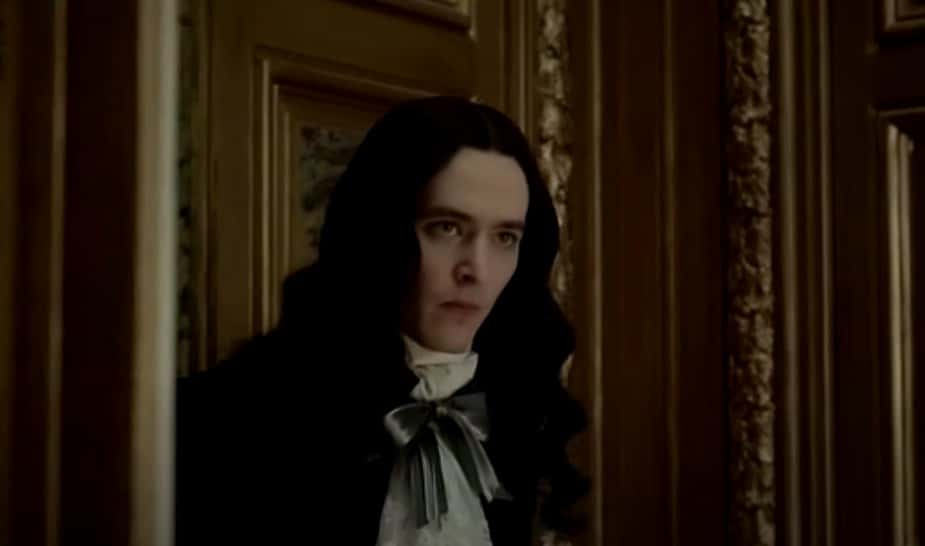 Versailles (2015-2018), Canal+
Versailles (2015-2018), Canal+
32. He Wasn’t Suitable
Philippe was certainly putting the moves on Anne Marie, but it may have been just a show. It turned out that Philippe was more interested in men than women. It wasn’t just that he was gay, Anne Marie didn’t like something else about Philippe: He was a momma’s boy. Anne Marie gave Phillipe a hard no. Sure a much younger gay man didn’t seem like a good match for Anne Maire—but was she just being too picky?
33. She Lost Him
The problem may have been that Anne Marie just couldn't find a man that was as good as her dear old dad. If she was indeed daddy’s little girl, that bond was about to end. It was a stroke that brought down Gaston in 1660 and left Anne Marie without any parents. While the passing of her father was a great loss for Anne Marie, it was also a great gain for her finances. It made her richer and an even more desirable wife.
34. She Had A Second Chance
In the meantime, Anne Marie’s cousins had quickly married other women. Philippe, the gay one, had even gone on to have a child—and he weirdly named her after Anne Marie. Our Anne Marie was attending weddings left right and center, but it never seemed to be her turn to be the bride. Then, in 1670, Philippe’s wife unexpectedly passed—though not before suffering some major humiliations concerning her husband’s orientation.
Phillipe was single and ready to mingle: and the person he wanted to mingle with was Anne Marie. Unsurprisingly, this was not a recipe for a fairy tale ending.
 Versailles (2015-2018), Canal+
Versailles (2015-2018), Canal+
35. She Said No Again
One woman hadn’t minded being married to the gay Philippe, but Anne Marie had her principles—and she also had her own money. She said no to Phillipe once again because she just didn’t need a husband that badly. She instead amused herself with friendships. Her newest friend was her half-sister, Marguerite Louise.
The two quickly became BFFs but, as it turned out, Anne Marie would not be the best influence over the naive Marguerite.
36. She Took Control
Marguerite asked Anne Marie to help her arrange a marriage to a possible husband—the Grand Prince of Tuscany. Anne Marie quickly put it in Marguerite’s mind that it was a poor match. What was Anne Marie up to? Trying to keep everyone around her as single as she was? Though Marguerite did end up marrying her Tuscan Prince, Anne Marie wasn’t through meddling yet.
37. She Was A Bad Role Model
When Marguerite was under Anne Marie’s influence, her behavior turned bizarre. When diplomats came to congratulate her on her marriage, Marguerite rudely chose to go hunting instead. She also openly took her cousin as a lover, even though she was already married. It’s not exactly clear that Anne Marie caused this rude behavior, but it did all happen right after the two had become friends.
Anne Marie seemed to be sabotaging both weddings and marriages. But what about her own romantic life? Was it a hopeless cause?
38. She Got Another Offer
In 1663, Anne Marie was moving on to bachelor number…at this point, there are too many to count. Her cousin Louis XIV had a great catch for her: Alfonso VI, the King of Portugal. But this was no Prince Charming. It didn’t take Anne Marie long to get the low down on Alfonso: He was a boozer, a paralytic, and possibly impotent. Thanks Louis, but no thanks.
Anne Marie was happy to remain single as long as she had her money.
39. She Begged
Anne Marie may have been happy being single, but Louis XIV was angry that she had rejected Alfonso. He was so angry that he sent poor Anne Marie back into exile. Of course, like before, exile meant doing some home improvements and taking up her writing again. This situation went on for about a year until Anne Marie, probably bored silly, begged Louis to let her return to court. Louis was a bit of a softy and said yes.
He hadn’t, however, given up on getting his cousin married—in fact, he had another suitor all lined up.
40. She Finally Said Yes
This time, Louis brought forward Charles Emmanuel II, the Duke of Savoy. Charles was not exactly a fresh prospect. He’d already had a wife and she’d been Anne Marie’s younger half-sister. In spite of him being her half-sister’s leftovers, Anne Marie was quite interested in marrying Charles. What a shocker. The wealthiest single girl in France had finally met someone she’d consider marrying.
There had to be a problem, right? Was he gay? Was he poor? What was the deal?
41. She Felt The Sting Of Karma
The deal with Charles was that he was damaged goods. He’d been quite devastated when he lost his first wife just a year after marrying her. This meant that he wasn’t so keen on marrying Anne Marie. She asked, but he told her he just wasn't ready. That's fair, but what came next must have hurt: Anne Marie was later shocked to find out Charles had turned around and married someone else just a year later. Ouch.
Did this mean that Anne Marie was plumb out of chances? Not quite.
42. She Had One Last Chance
In 1666, Anne Marie met Antoine Nompar de Caumont, who later became Duke Lauzun. In spite of his fancy-sounding name, Lauzun was an impoverished nobleman. Besides that, there are a few other important details to know about Lauzun: He was very opinionated, he was a renowned soldier, he made women go wild, and he was physically very, very small.
This rare combination of characteristics somehow made Anne Marie go bananas. She was finally in love!
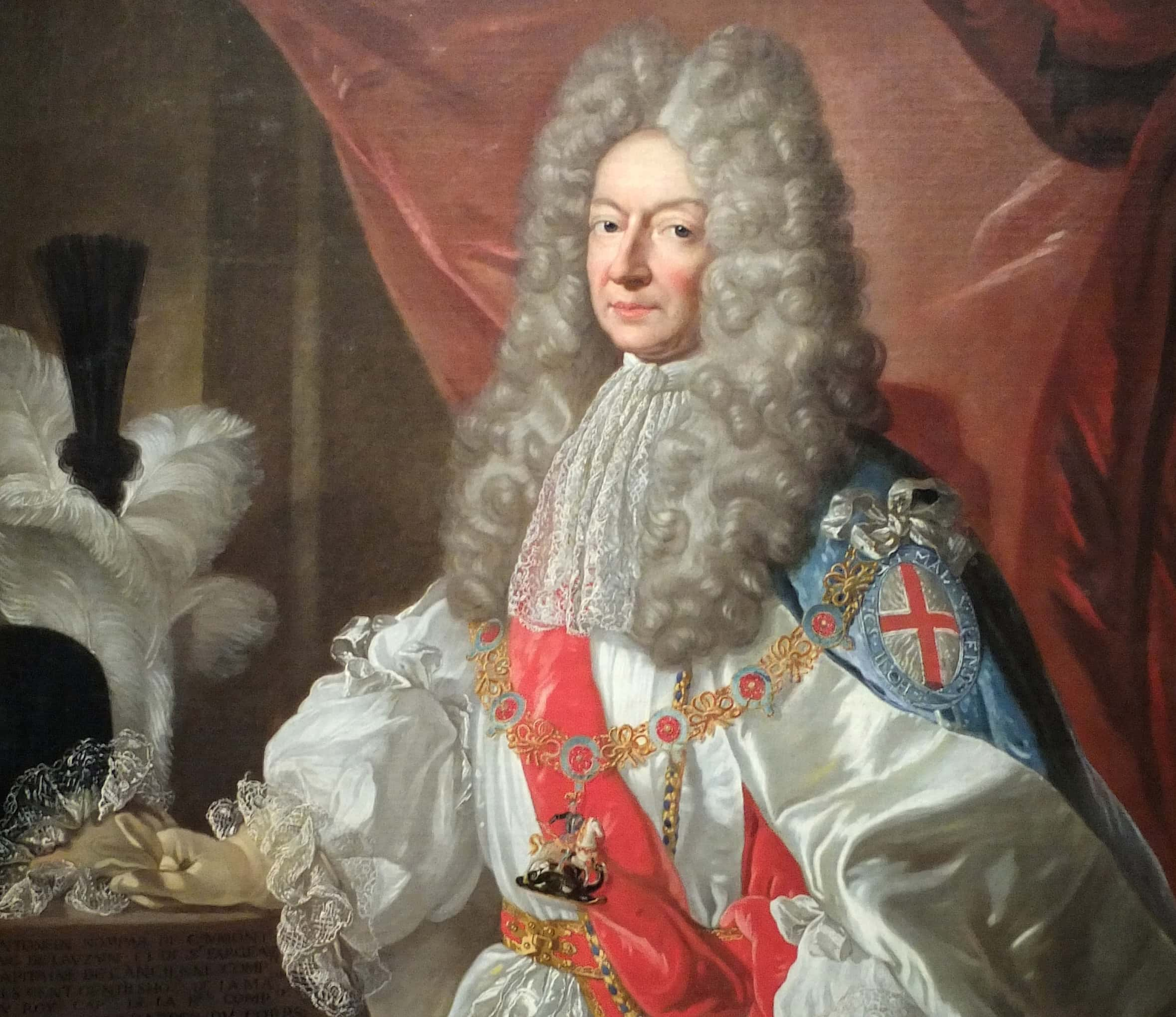 Wikipedia
Wikipedia
43. They Flirted Horribly
When Lauzun saw Anne Marie one day wearing a red ribbon in her hair, he told her that the look was too youthful for her. Anne Marie snapped back: “people of my rank are always young.” The juvenile flirting confirmed it: these two smitten kittens were in love. She was 39 and he was 34, and nothing was going to stop Anne Marie from finally marrying someone she truly wanted to be with.
All she had to do was get the King’s permission to marry and it would all be set. What could go wrong?
44. She Had To Ask
Getting the King’s permission would be easy, because Louis XIV was good friends with Lauzun. There was the small problem that Lauzun would be marrying out of his class, but who could say no to the greatest heiress of Europe? Louis happily gave Anne Marie permission to marry the love of her life, then he turned to his wife and waited for her to agree with him.
Queen Marie Therese’s response was not exactly what Anne Marie wanted to hear.
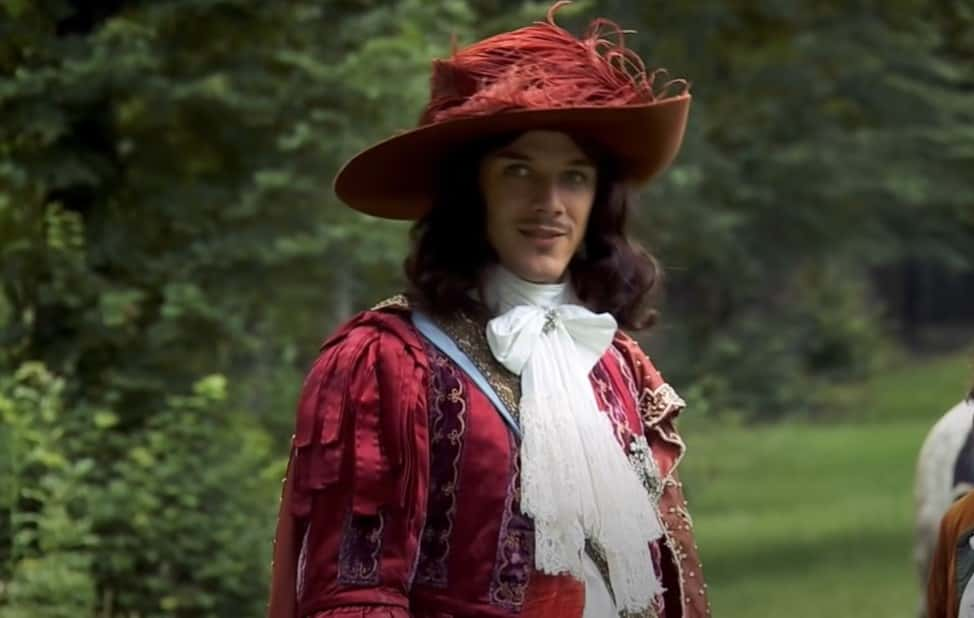 Versailles: The Dream of a King (2008), Les Films d
Versailles: The Dream of a King (2008), Les Films d
45. The Three Happiest Days
Anne Marie and Lauzun had already set the wedding day for Sunday, December 21, 1670. All they needed was the signatures of the King and Queen. Anne Marie later said that December 15 to 18 were three of the happiest days of her life. Well, at least she got those days. Not only did the Queen not sign the certificate, she convinced the King not to sign as well. The engagement and wedding were off.
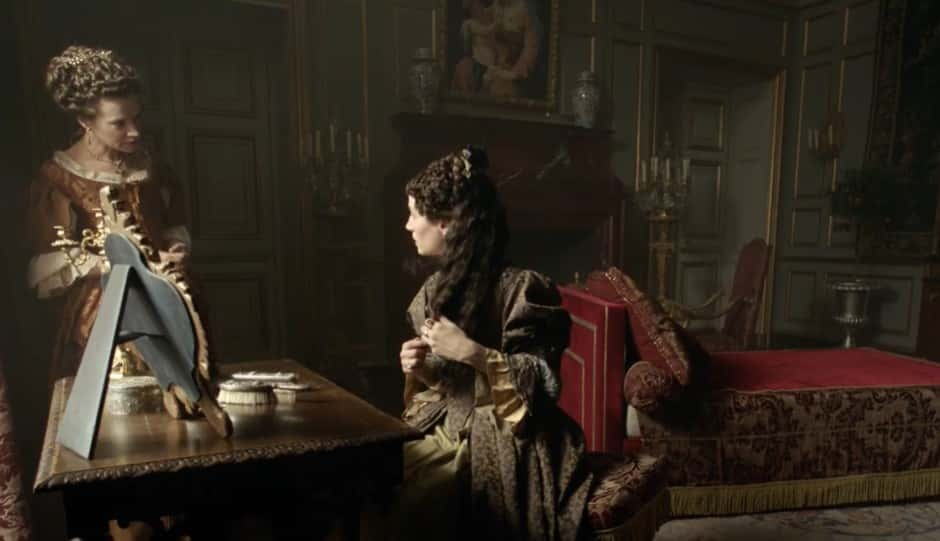 Versailles (2015-2018), Canal+
Versailles (2015-2018), Canal+
46. She Emerged
Anne Marie was so despondent she went into her apartments, closed the doors, and didn’t emerge again for weeks. She only came out because she had gotten some horrible news: Lauzun was under arrest. Outraged, Anne Marie made it her business to see to it the King released him. However, to make this difficult, the authorities moved Lauzun to Pignerol Fortress and kept him under tight security.
47. There Was A Price To Pay
Anne Marie’s beloved Lauzun was in prison and there was little she could do to get him out. She approached the King and Queen and asked them what she could do to get Lauzun freed. Was there some price she could pay? As it turned out, there was. King Louis XIV and his wife offered a brutal bargain: They'd release Lauzon if she gave up two of her properties—the two most profitable. These would go to their son.
Anne Marie had an agonizing decision to make: save her love, or keep her fortune.
 Versailles (2015-2018), Canal+
Versailles (2015-2018), Canal+
48. It Was True Love
Anne Marie had only found true love once, and she would do anything to save it. She handed over her land and bought her true love’s freedom. But what kind of freedom had she purchased? She and Lauzon married in secret and they were ready to finally make it official, but how did the King feel about this? Cruelly, even after all the hoops Anne Marie had jumped through, Louis still wouldn't let them officially be husband and wife.
49. One Last Meeting
In 1681, Lauzun was free from prison and lived at Bourbon castle for a short time before they let him return to Paris. Once in Paris, Lauzun did not get permission to return to court, so he was stuck at Hotel de Lauzun. Through all this, there were bad feelings between Anne Marie and Lauzun. When the Queen passed in 1683, they got together for one last time. It seemed their spark of love had fizzled out. After their meeting, Anne Marie left for her residence in Paris.
50. She Refused Him
Anne Marie was still at her residence when, in 1693, she became ill. Lauzun was desperate to see her and begged for an audience. Though her old lover's desire for one last meeting touched Anne Marie, her pride prevented her from seeing him. She refused. Then, on April 5, 1693, Anne Marie Anne Marie Louise d’Orleans, Duchess of Montpensier, passed.
She had lived to 66 without ever having a husband, and at her funeral, they simply called her “the wealthiest single princess of Europe.”
51. She Exploded
Because Anne Marie was the “Granddaughter of France,” her body was put out for mourners to see. The custom of the time was to put the deceased's entrails in an urn and place them alongside the body. In the middle of the ceremony, disaster struck. The urn containing her entrails exploded. The smell from this was so disgusting that mourners fled the ceremony in chaos.
Even the afterlife appears to have been an ordeal for Anne Marie—history's original poor little rich girl.

